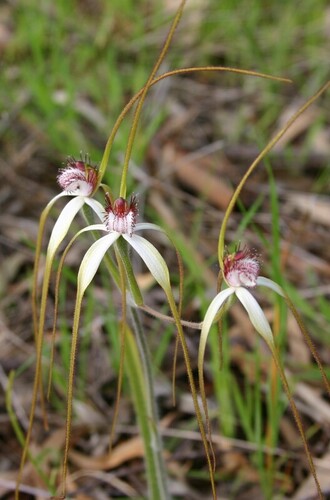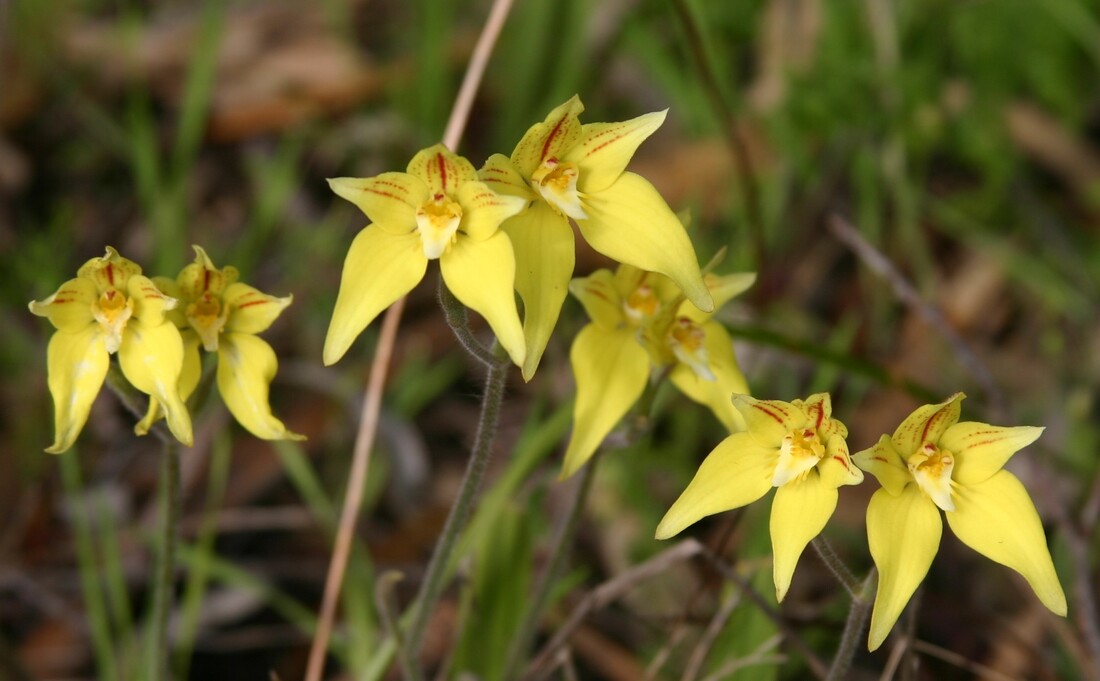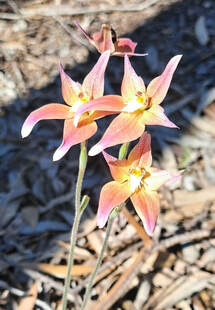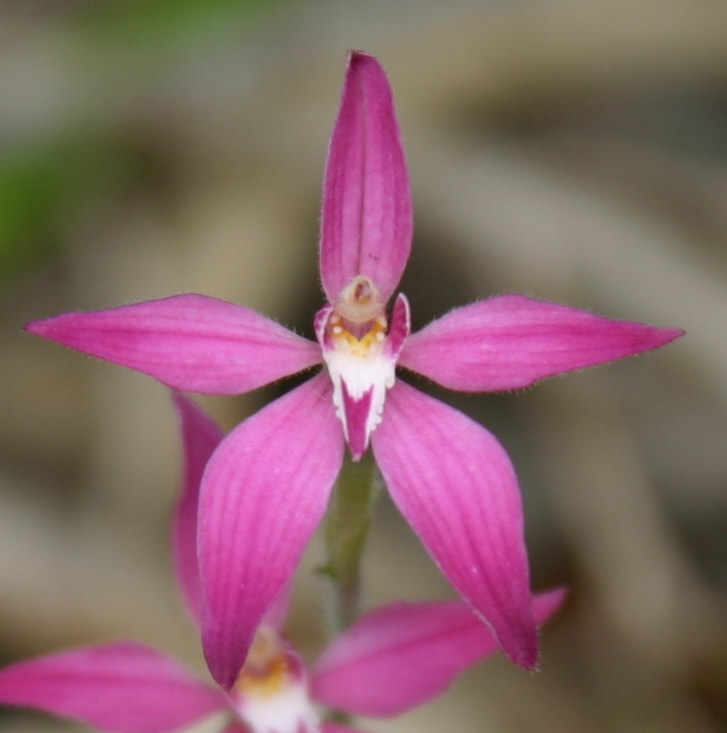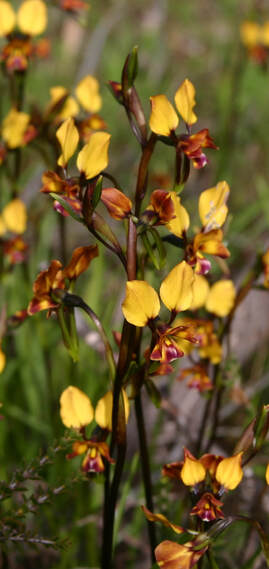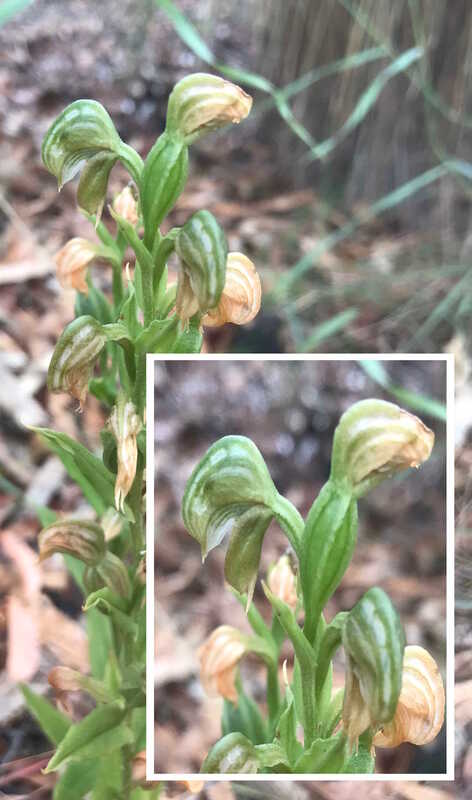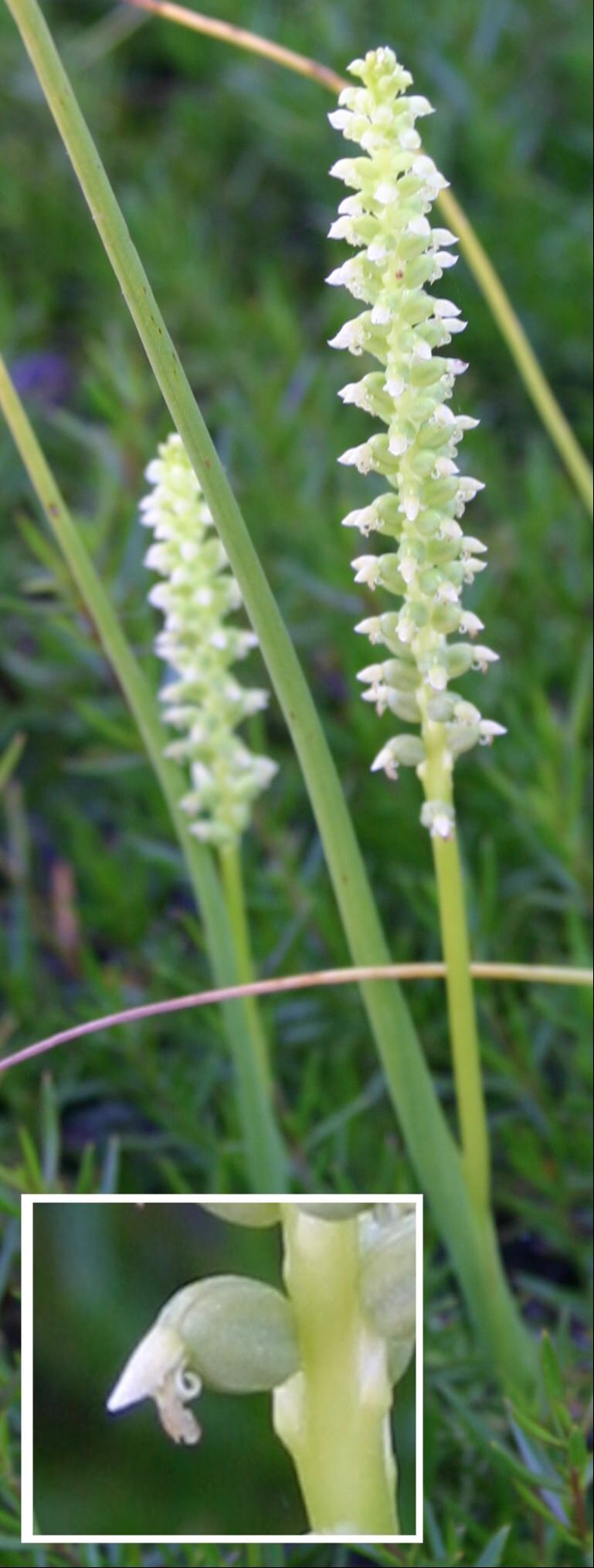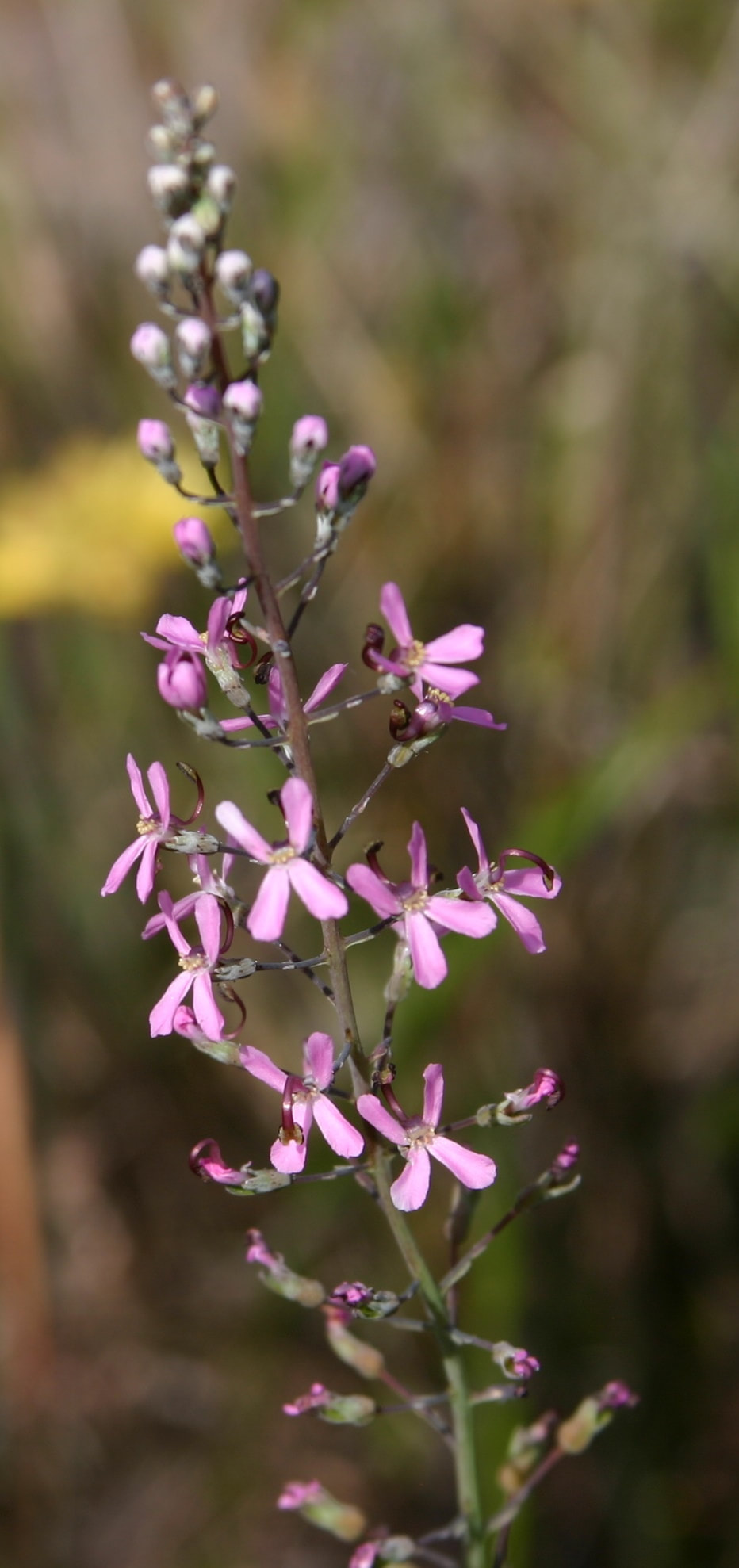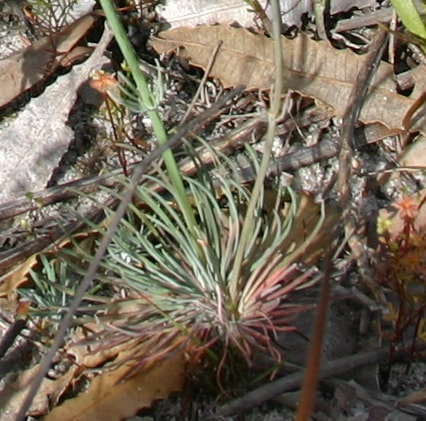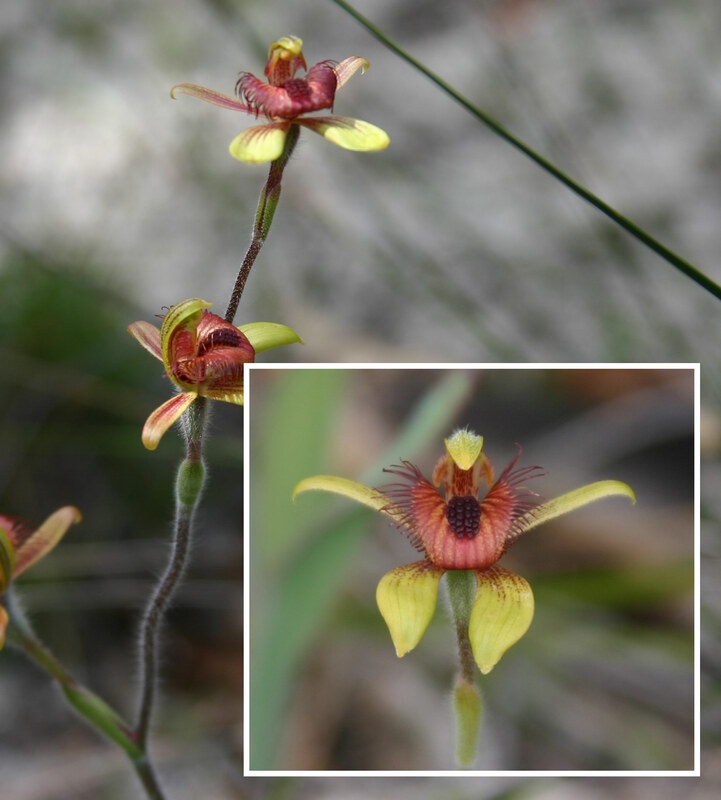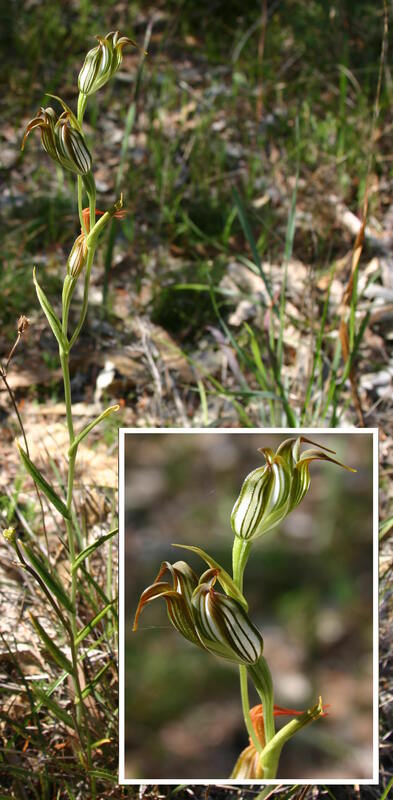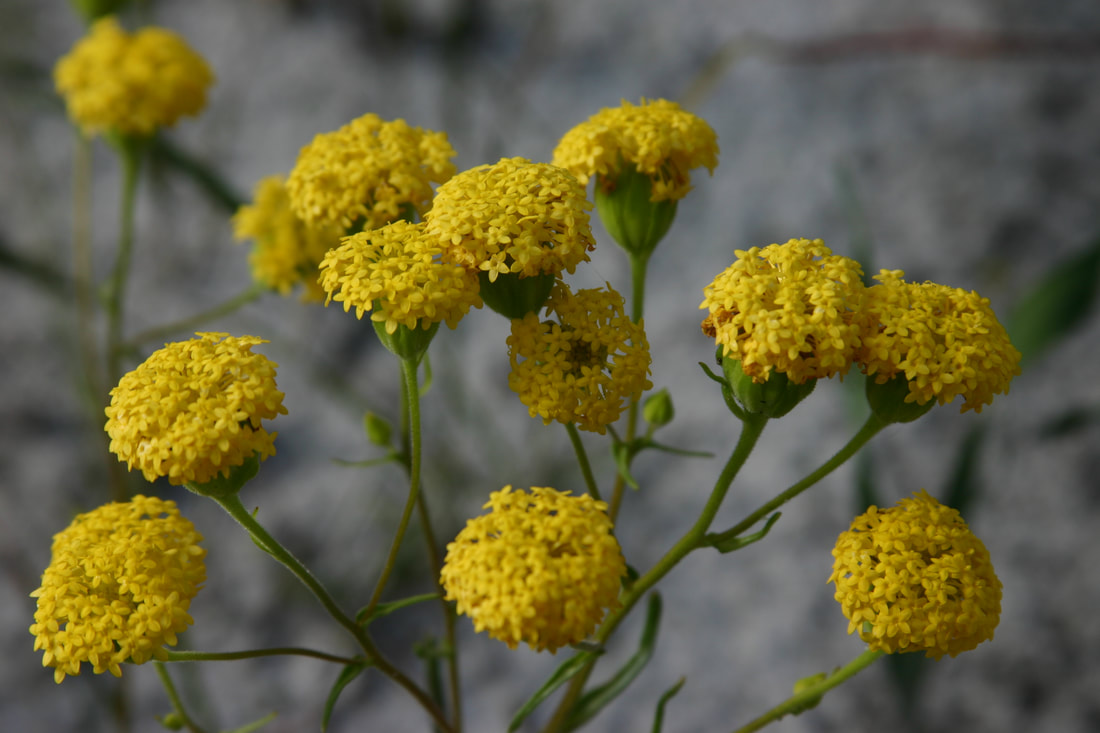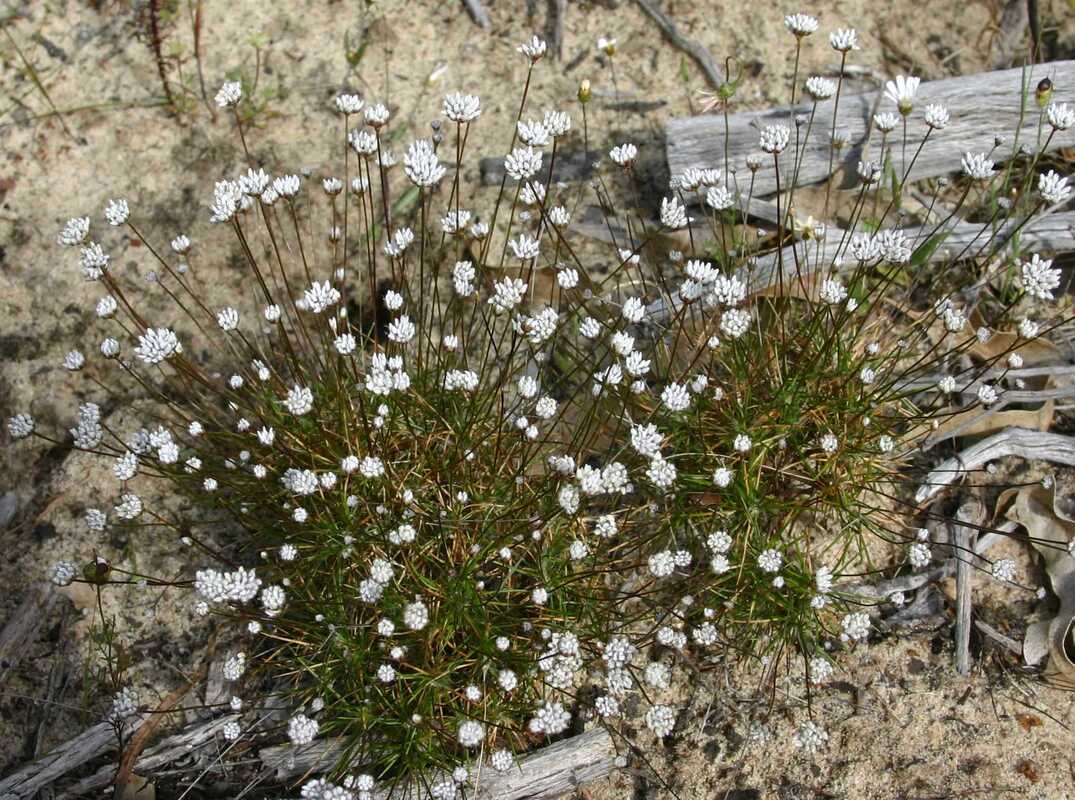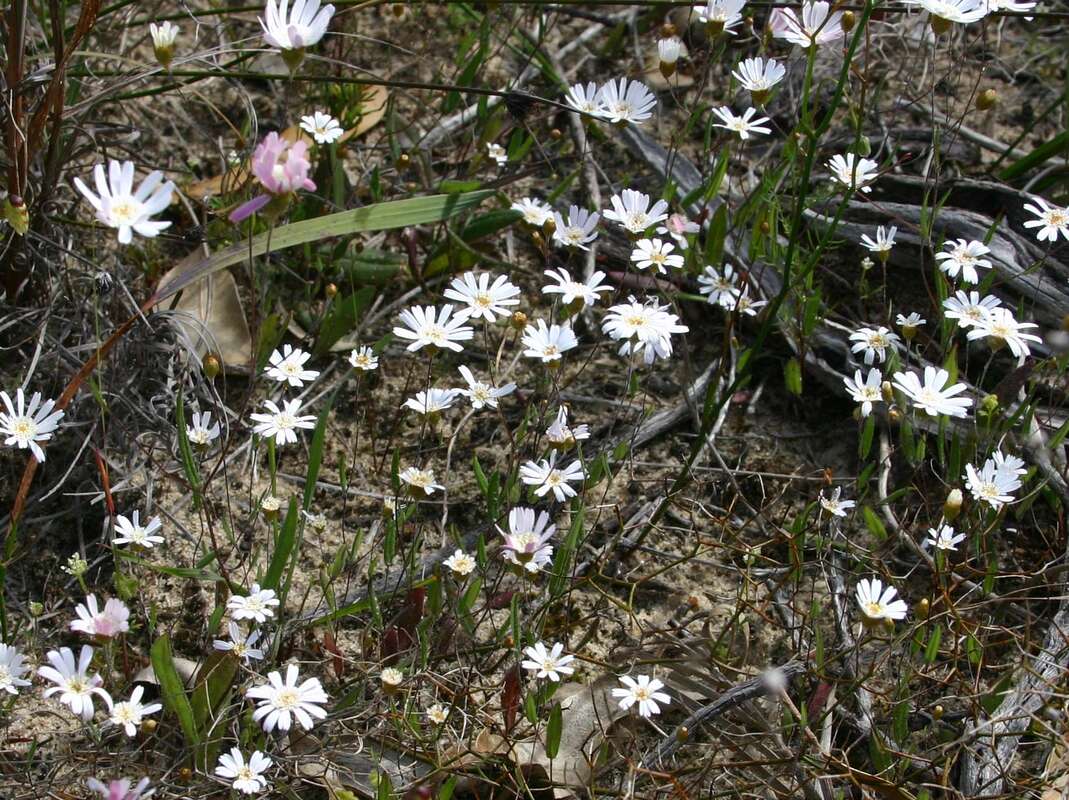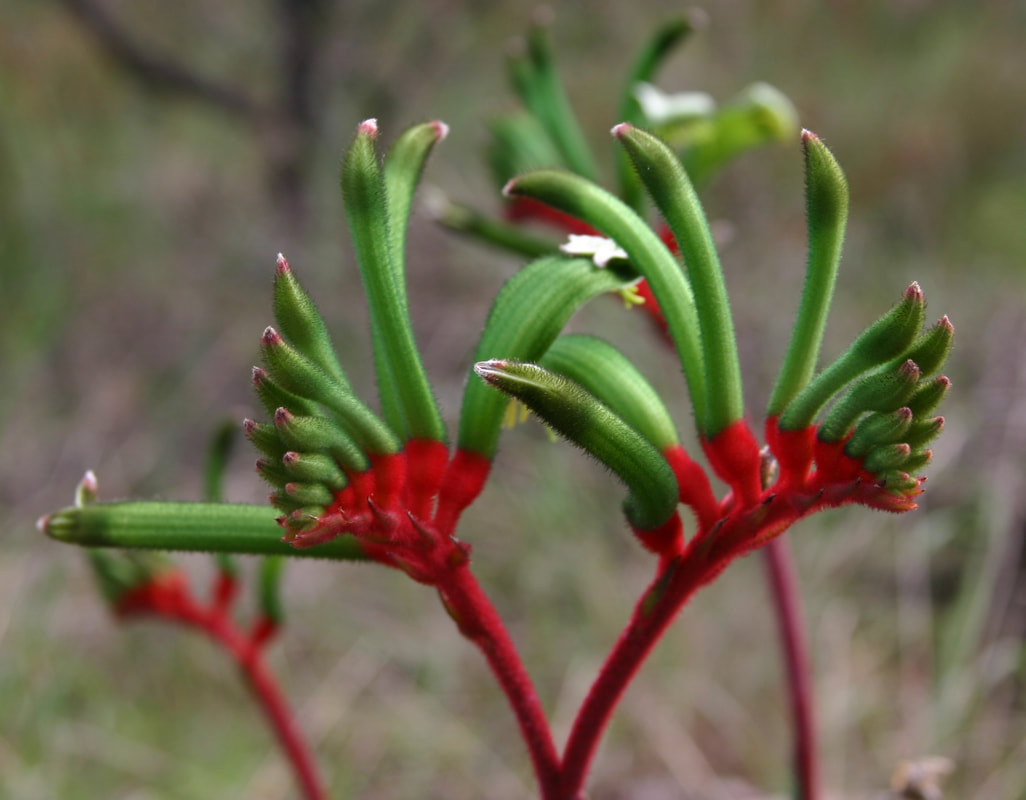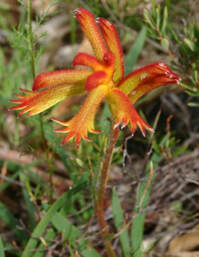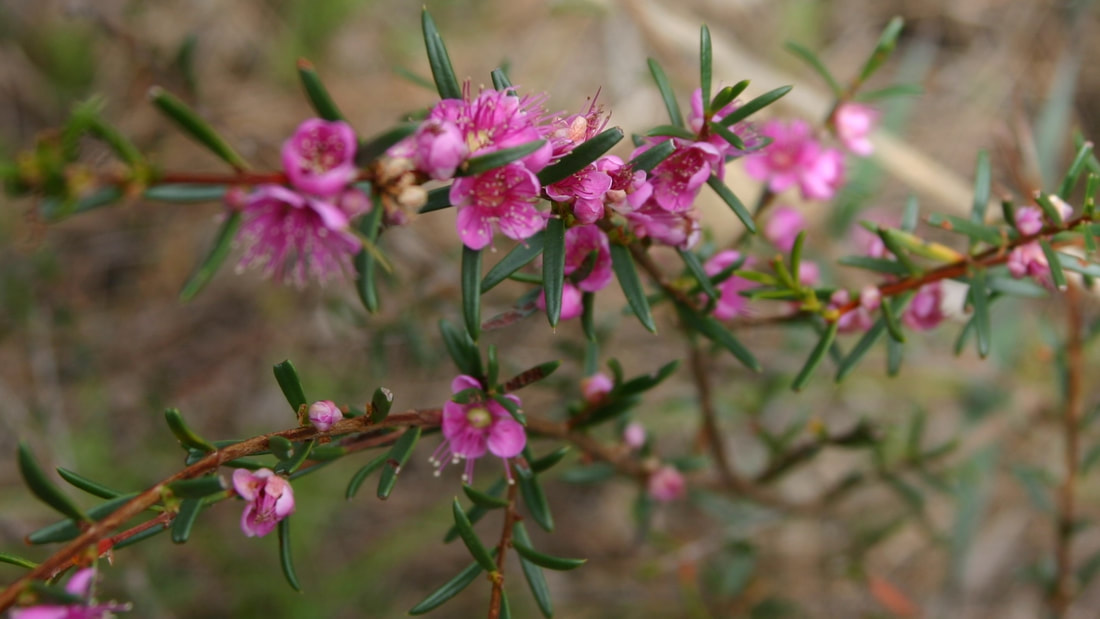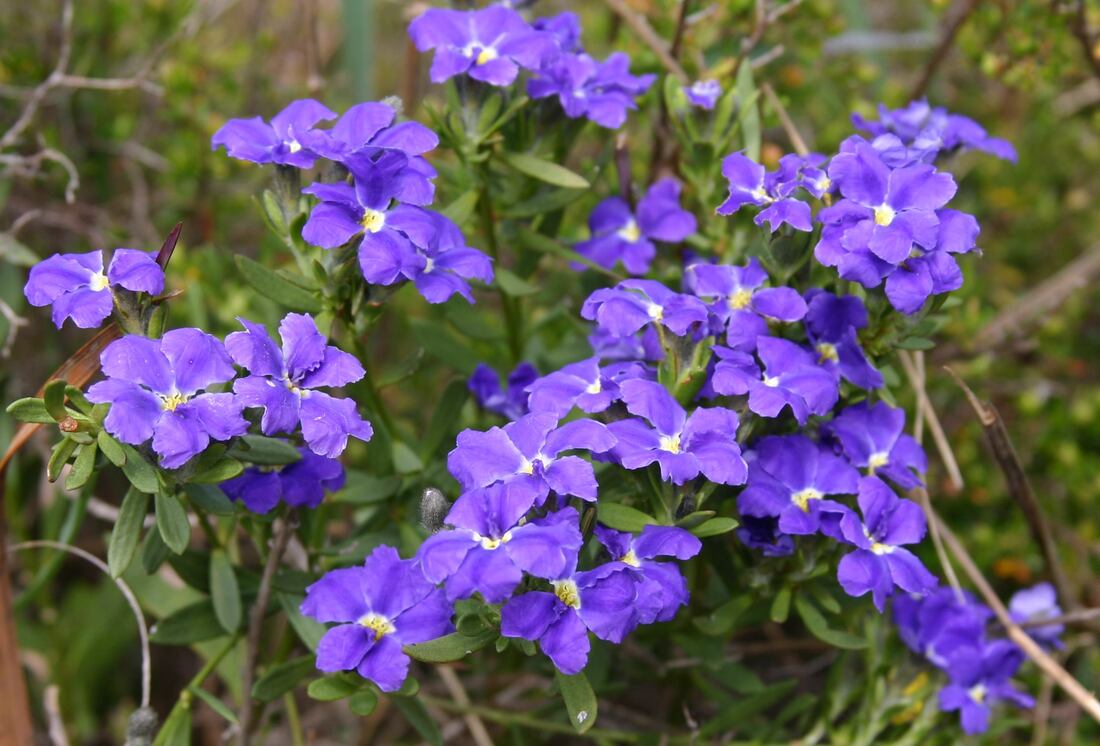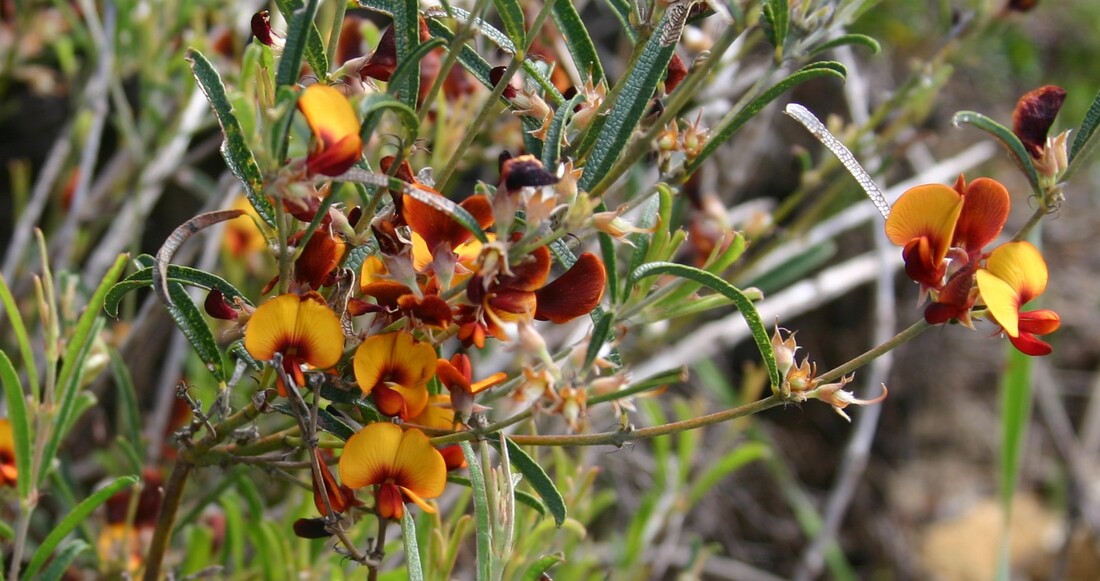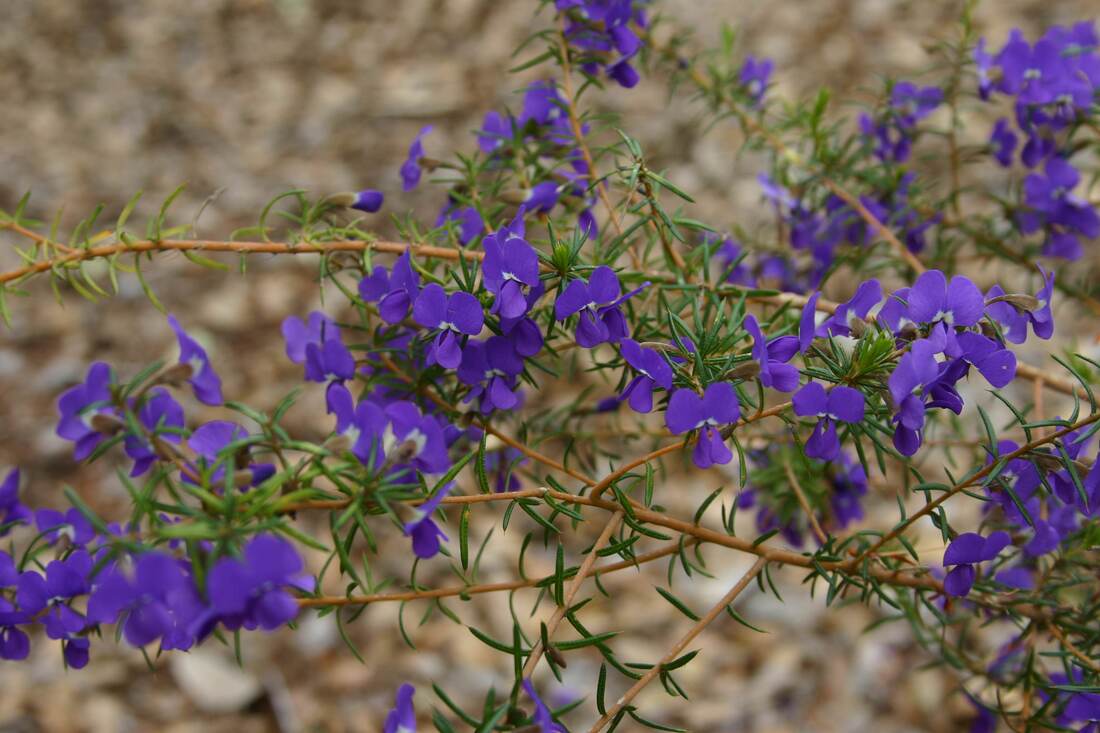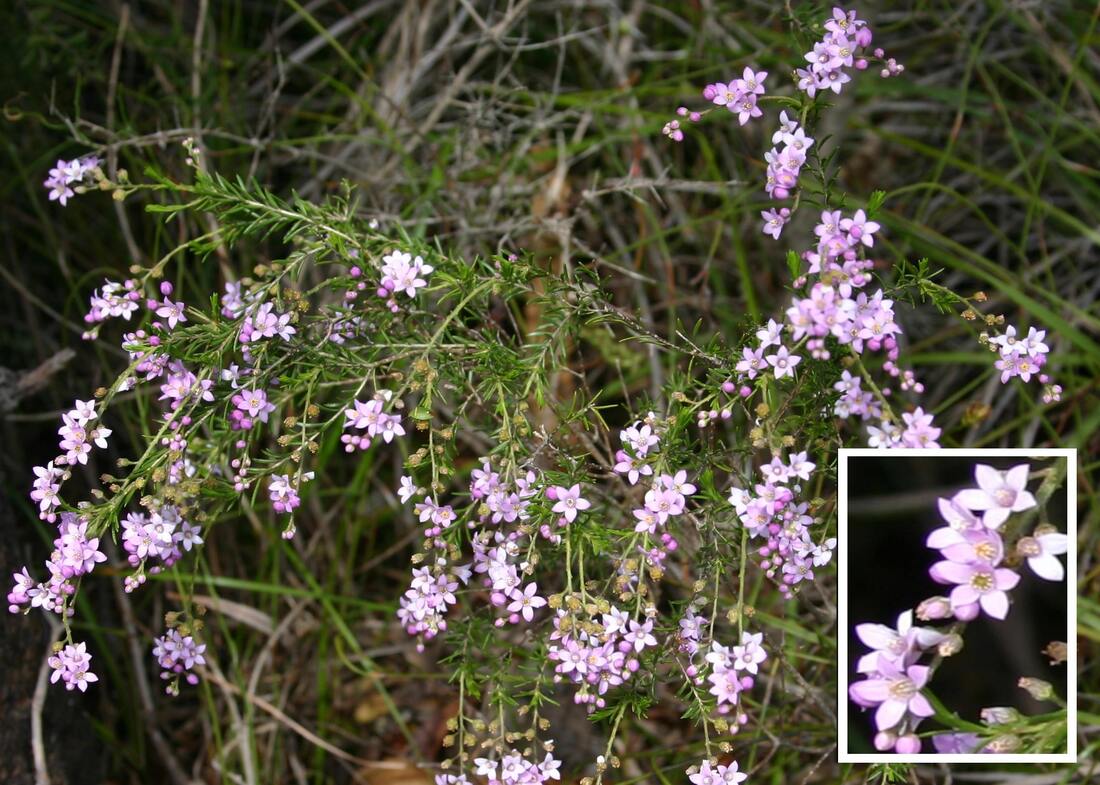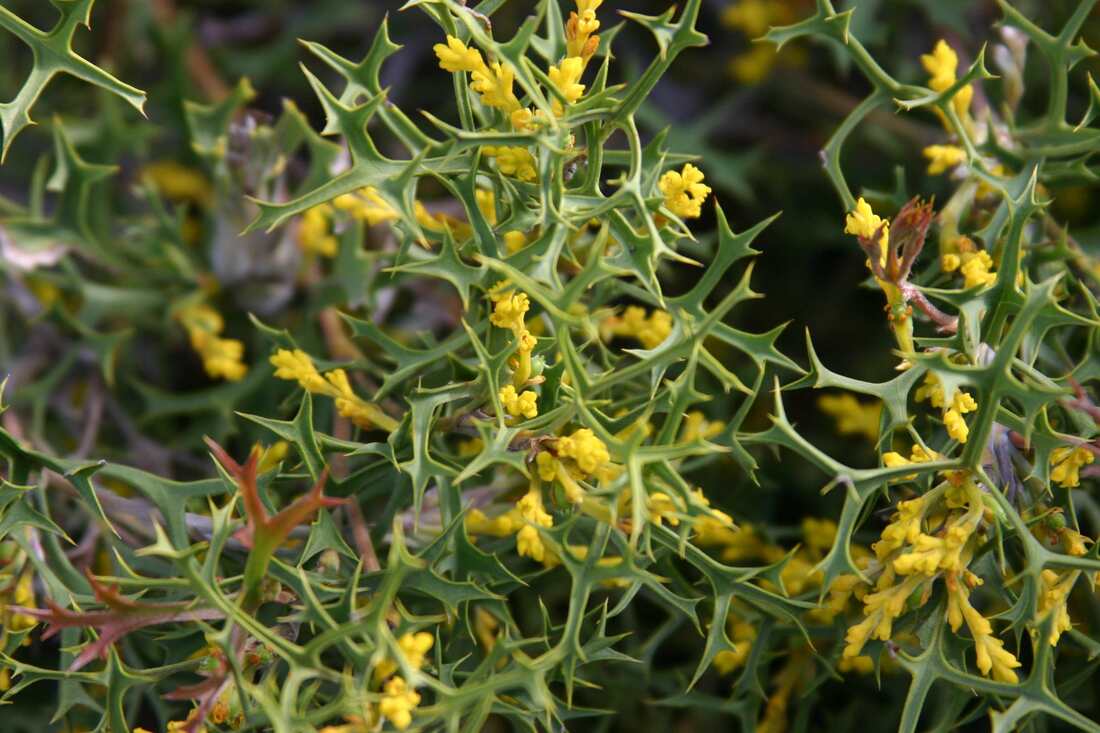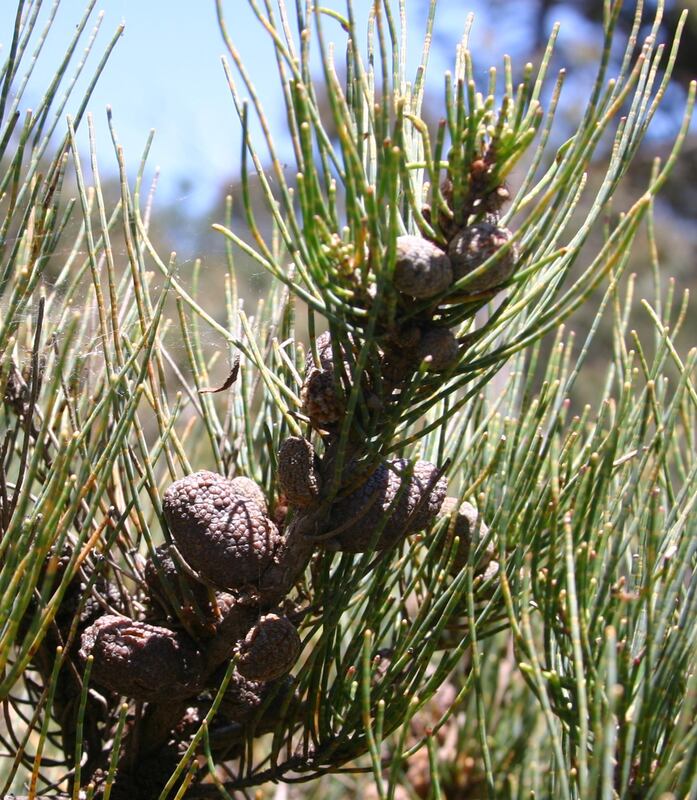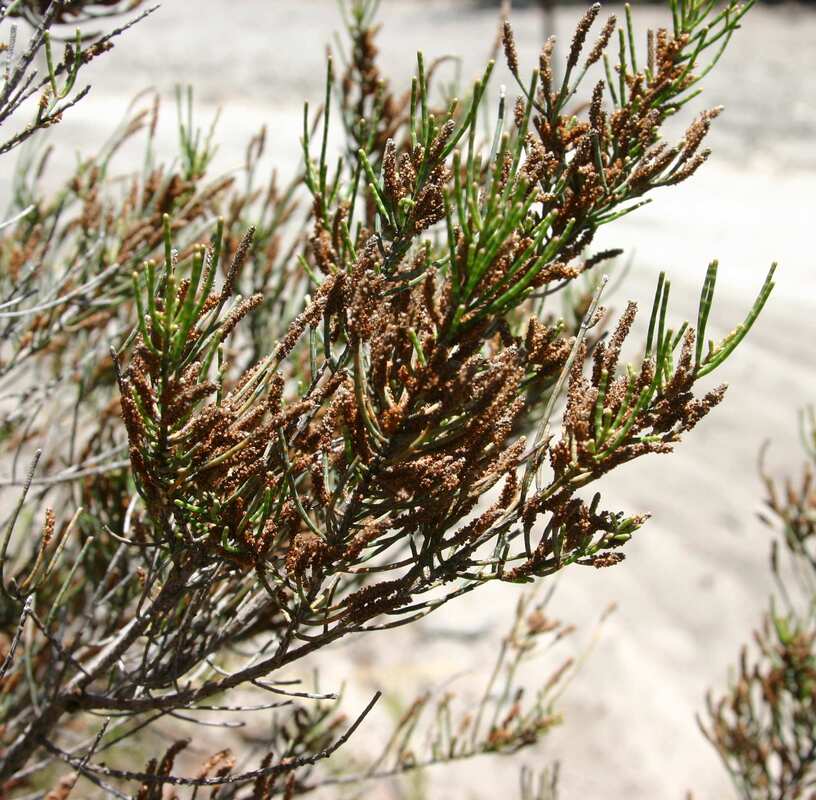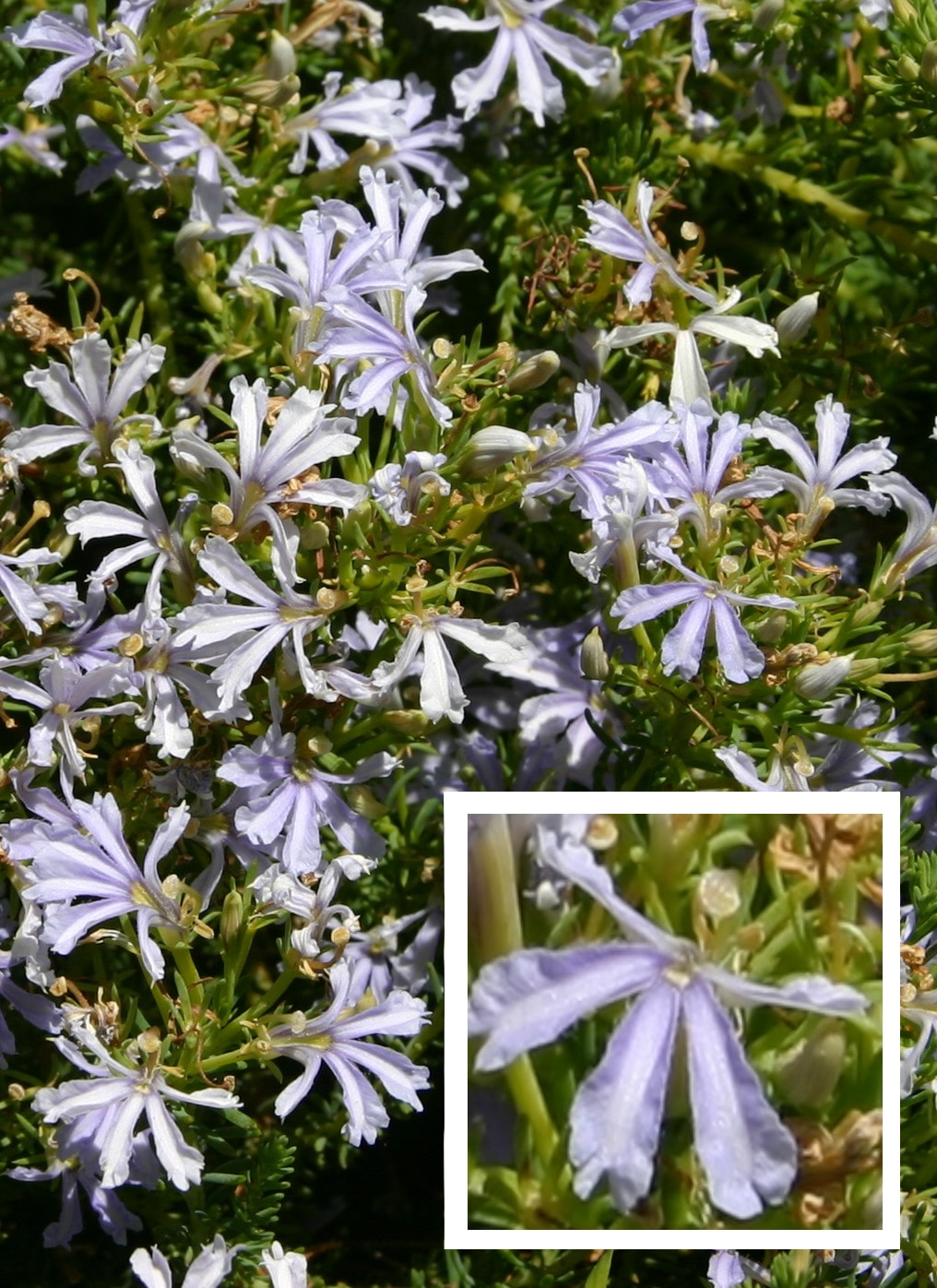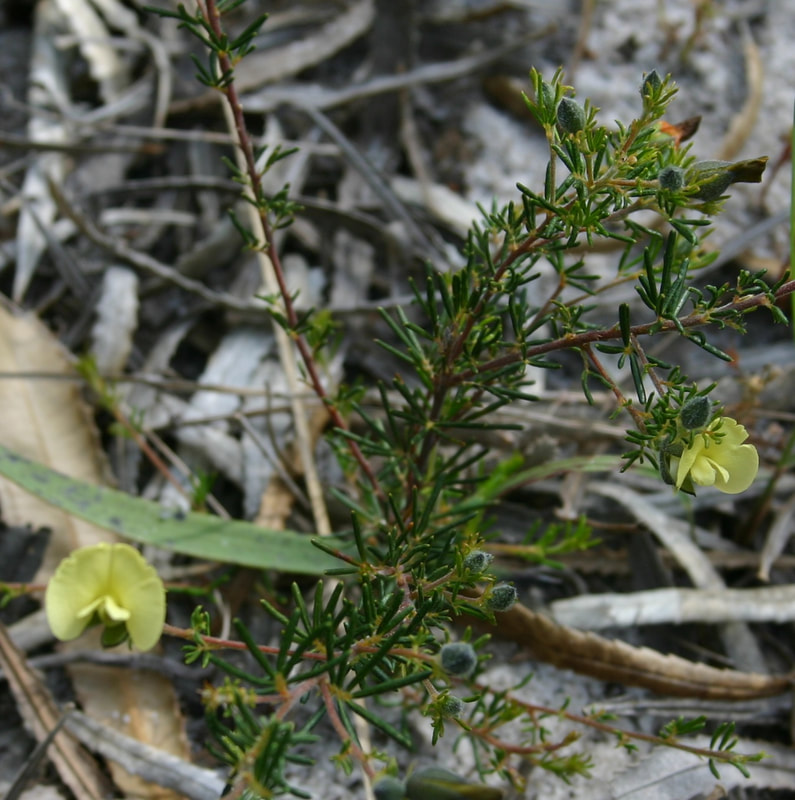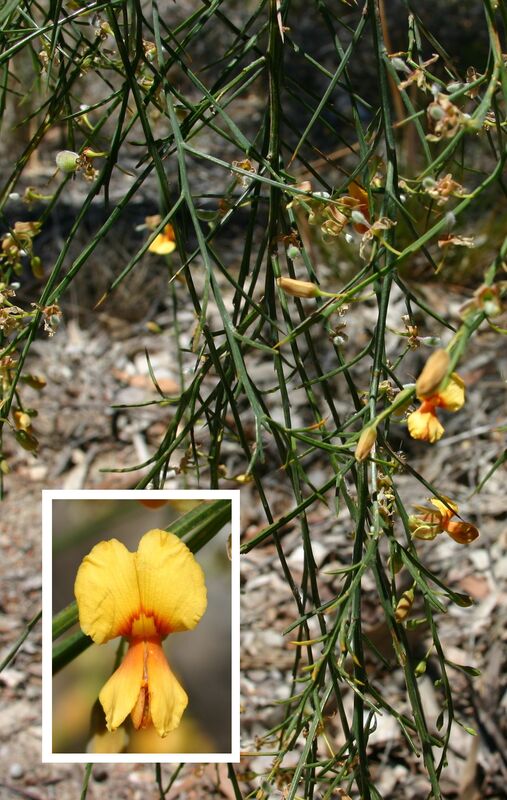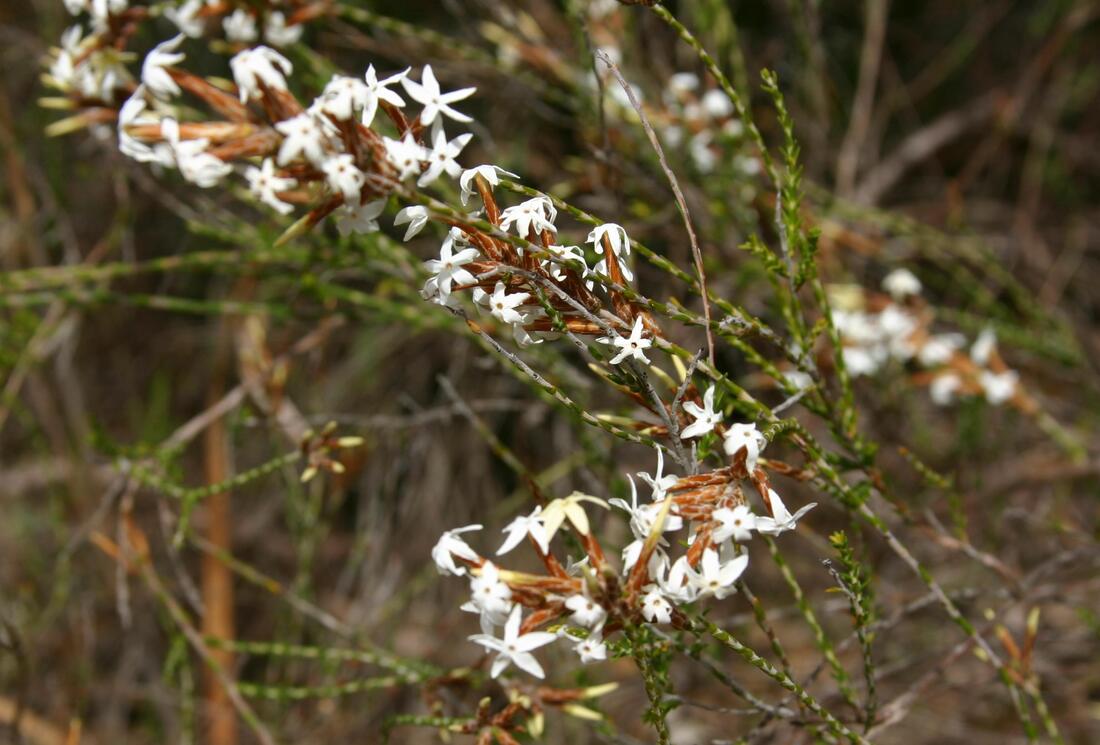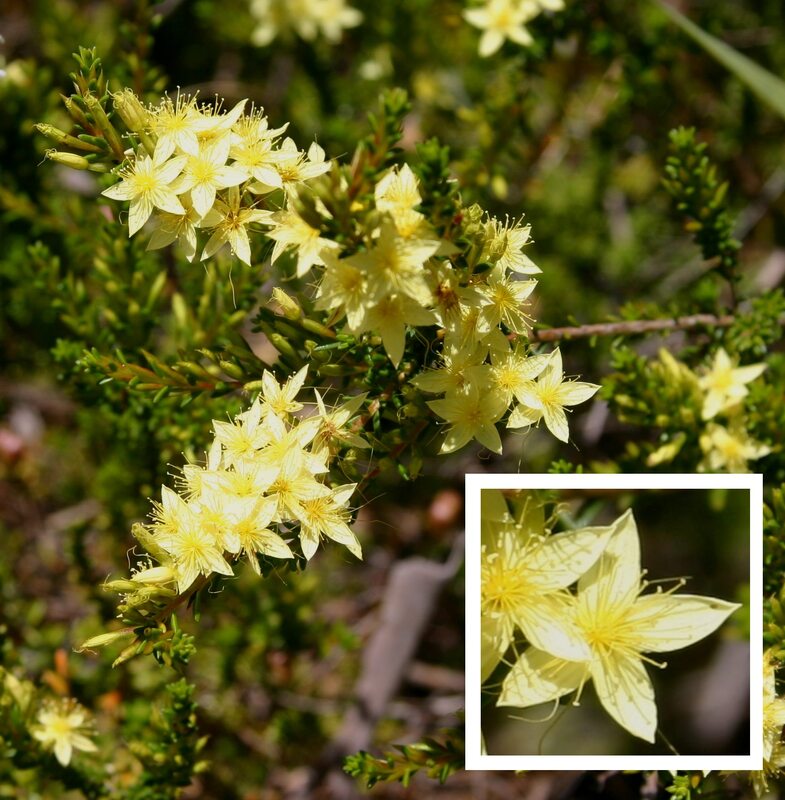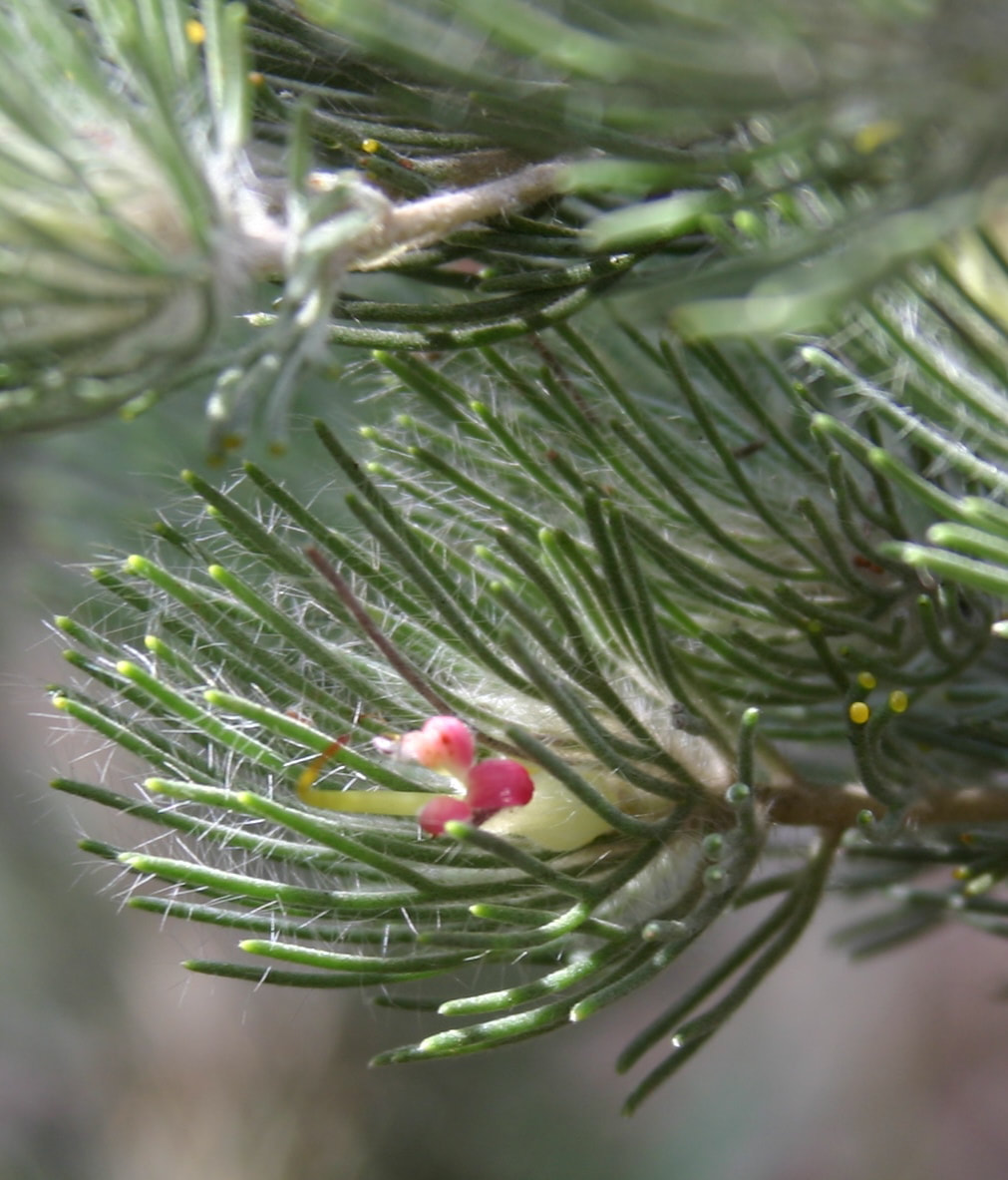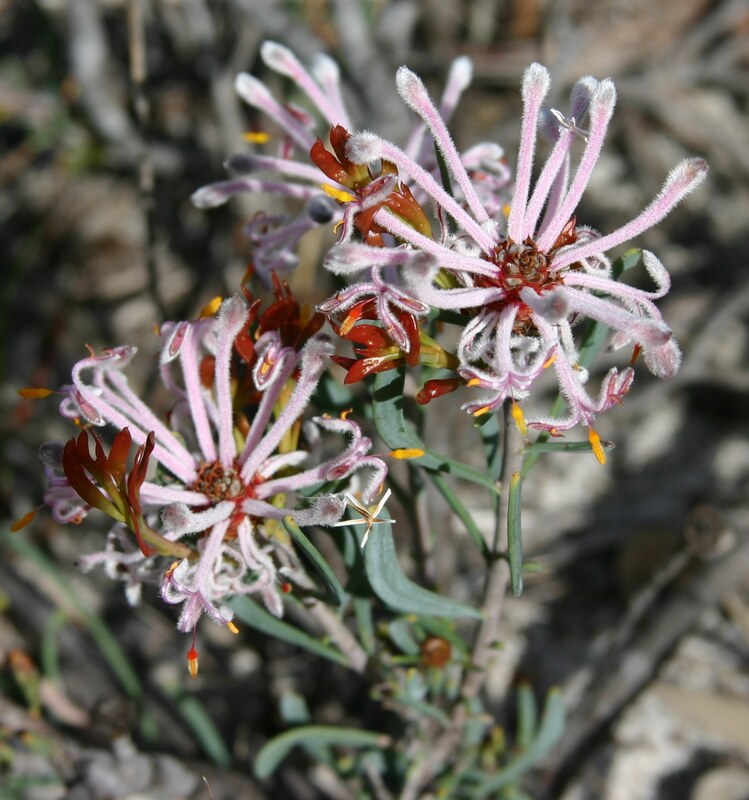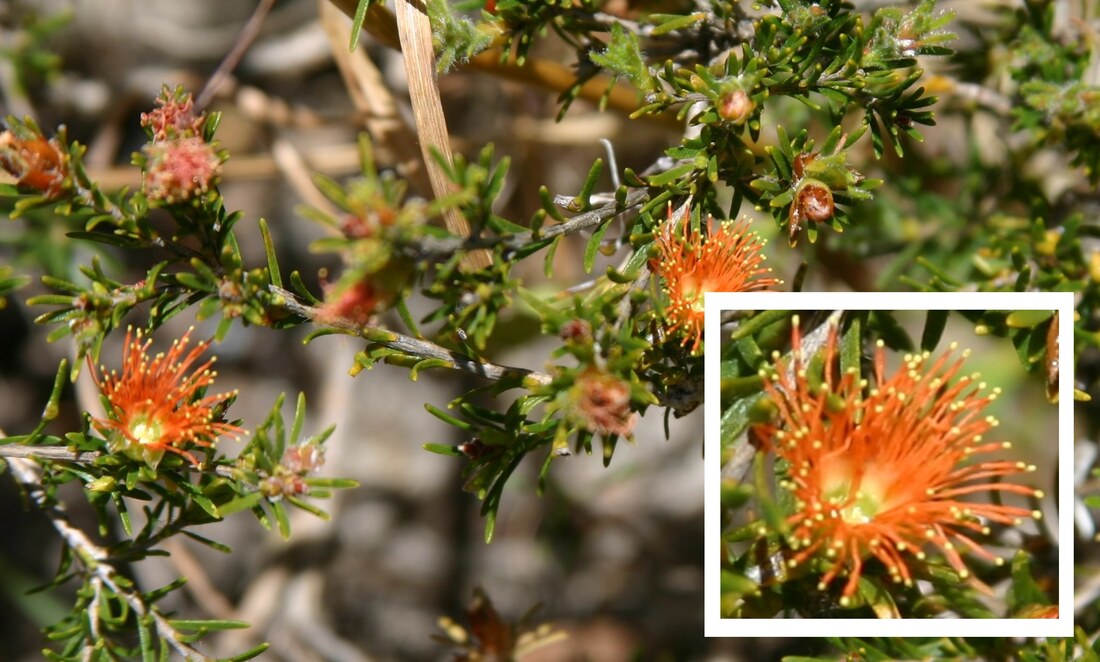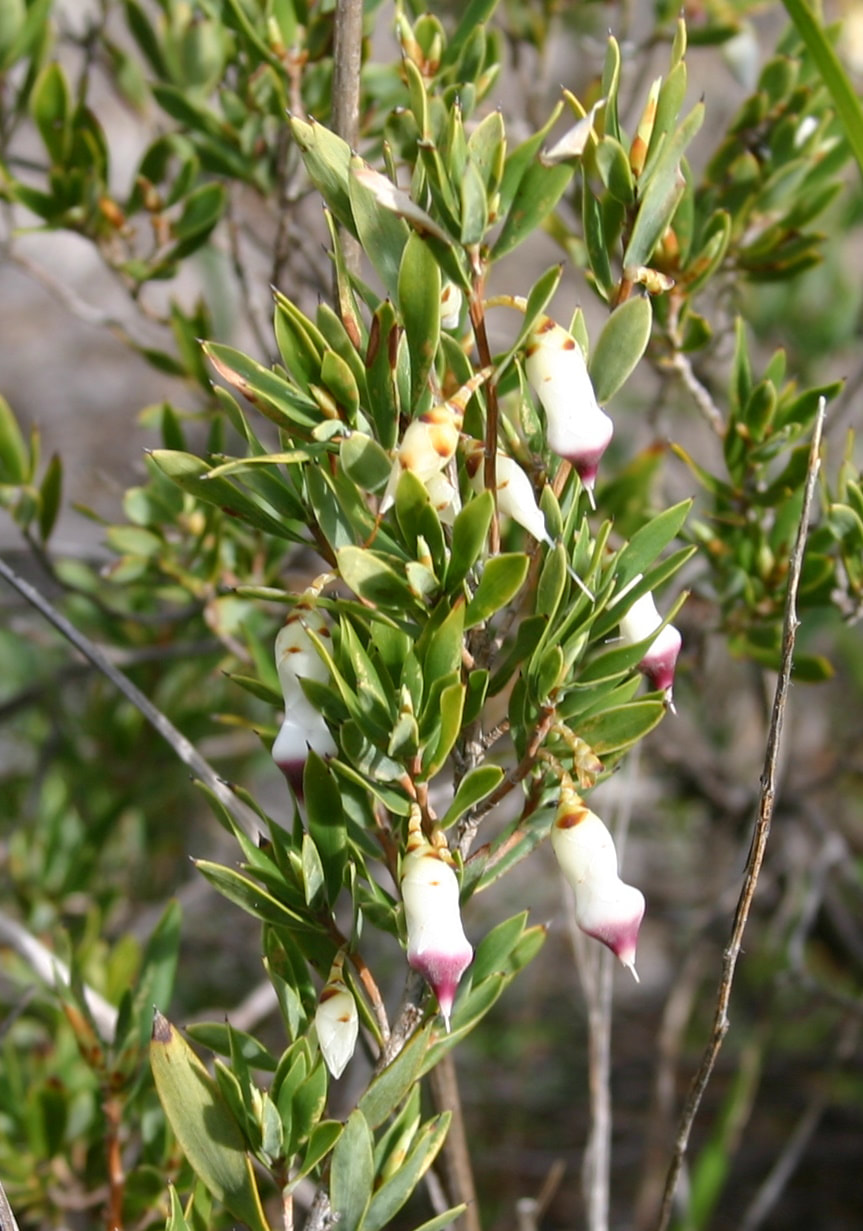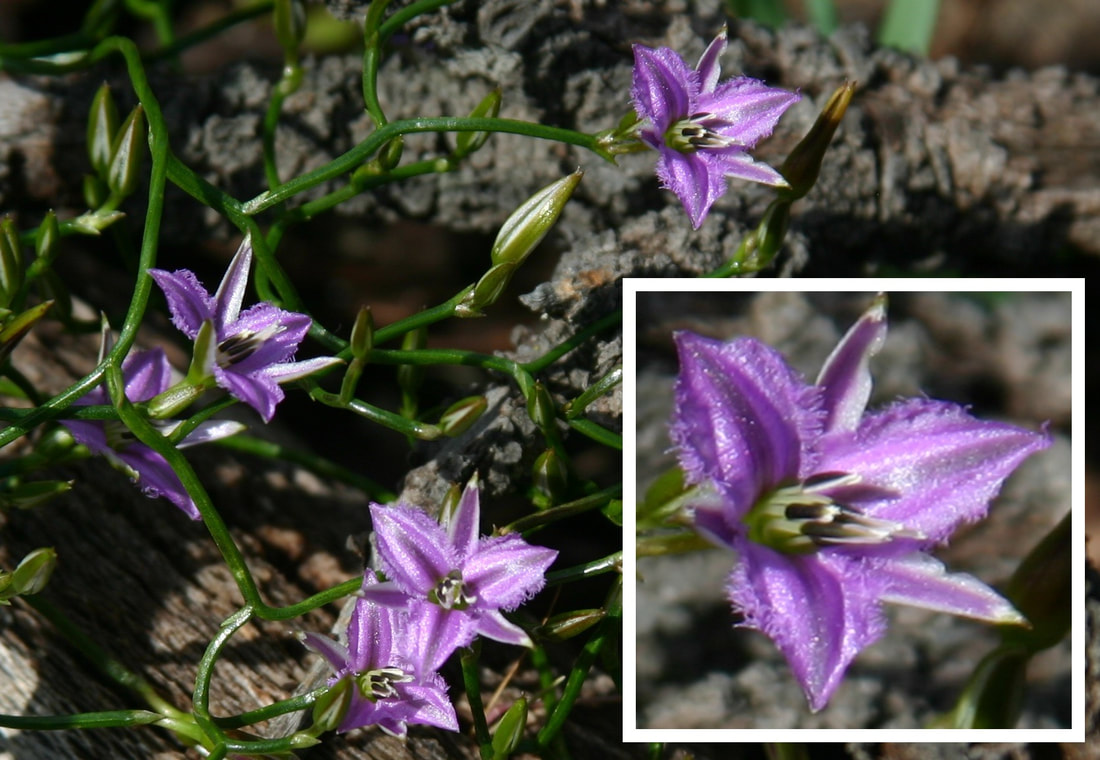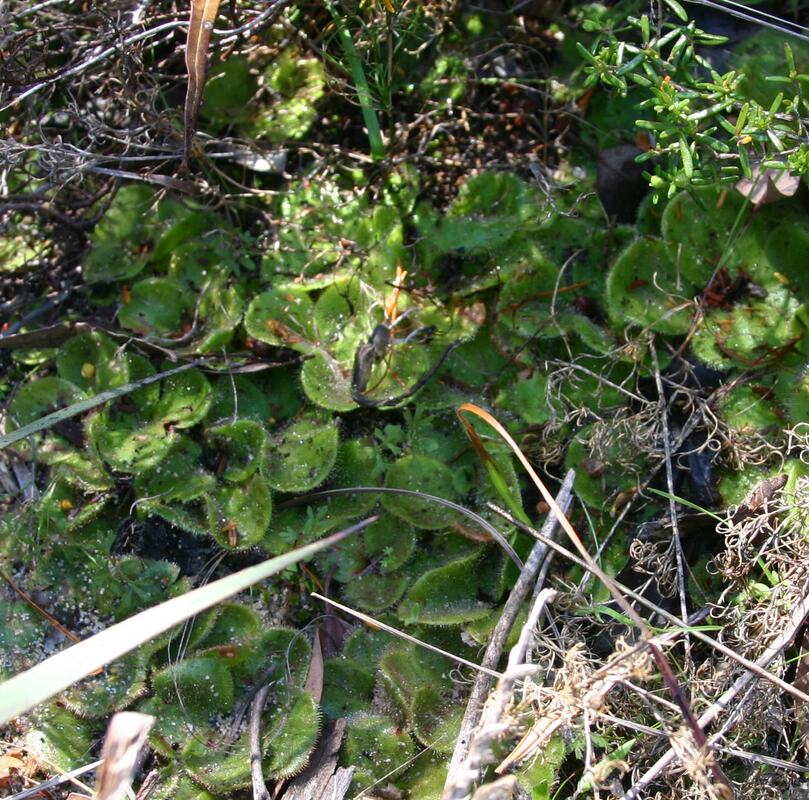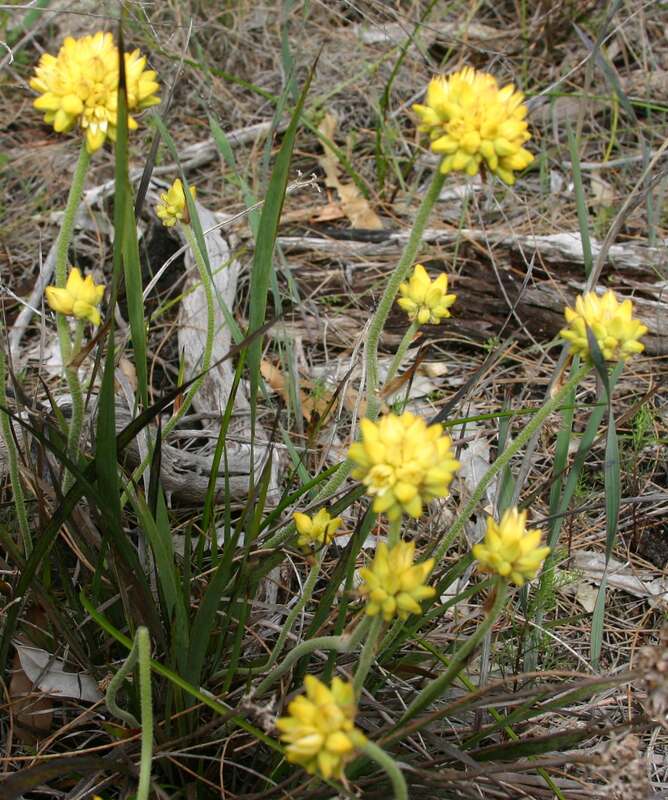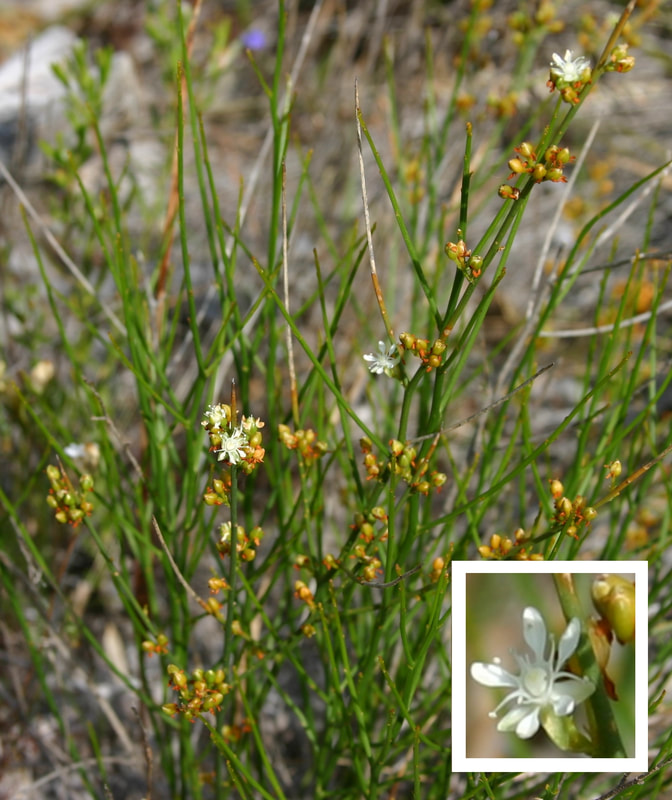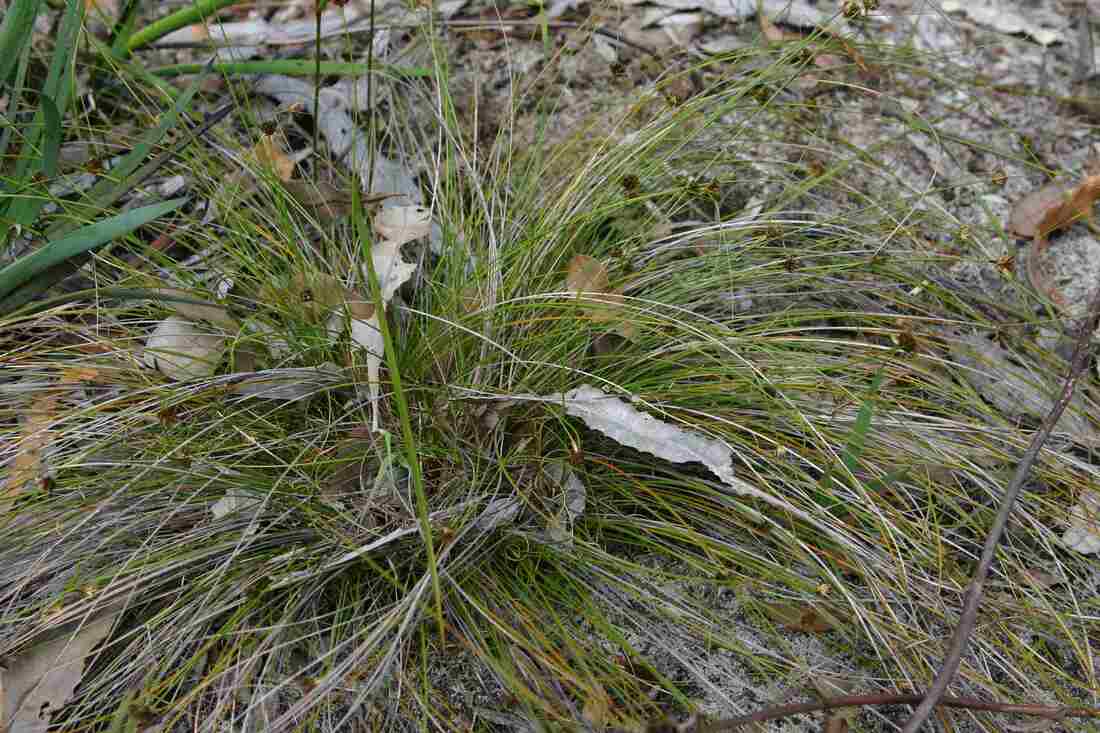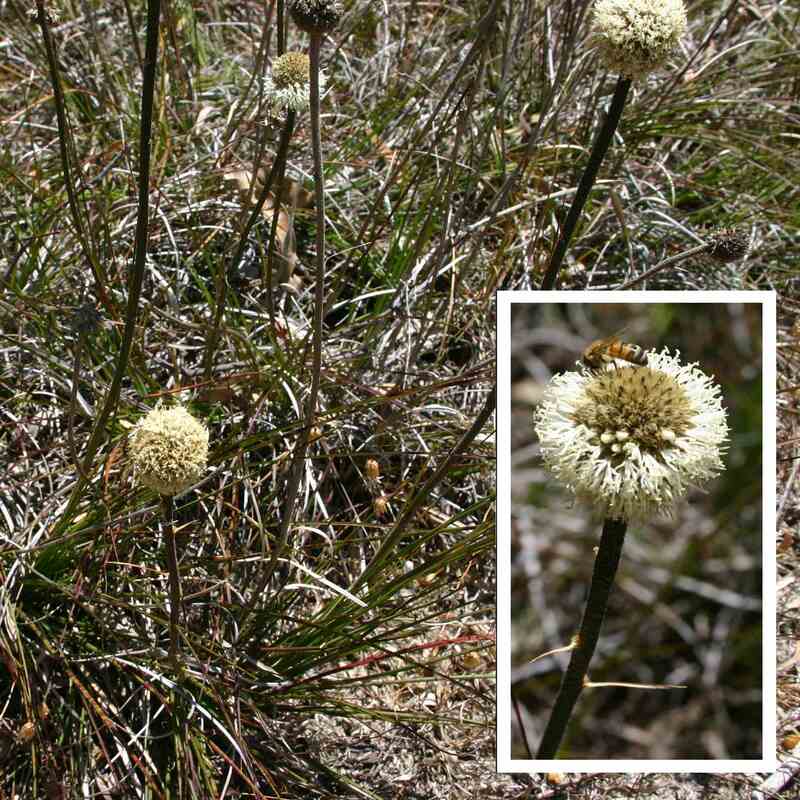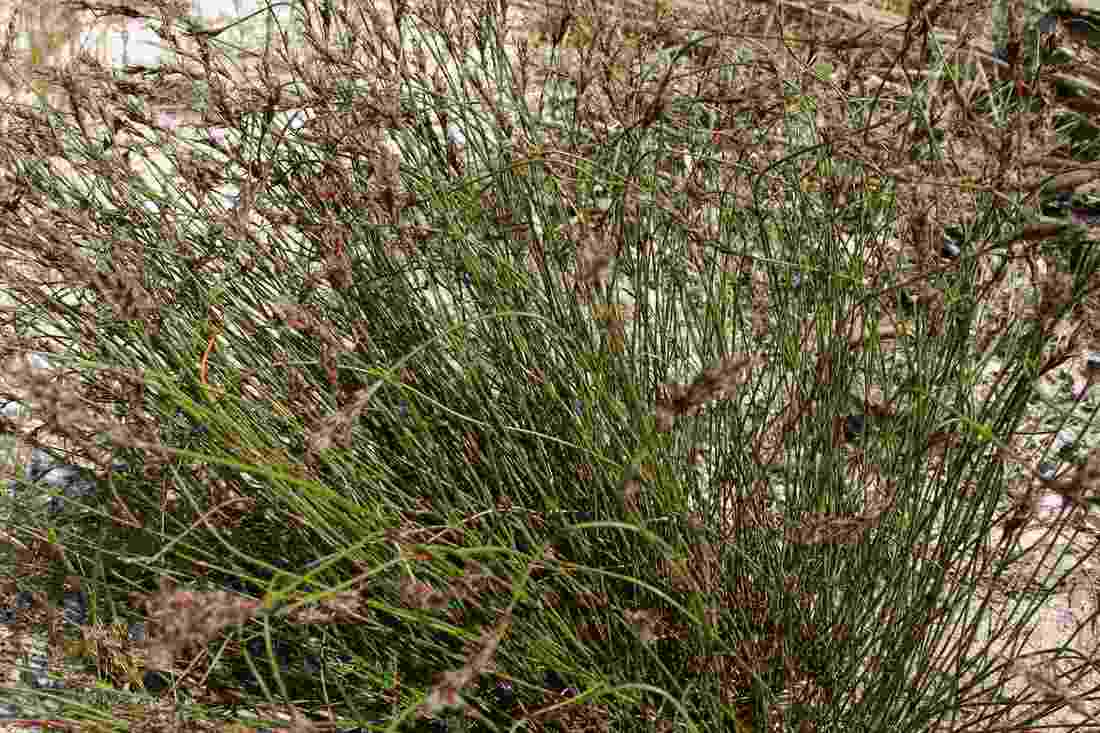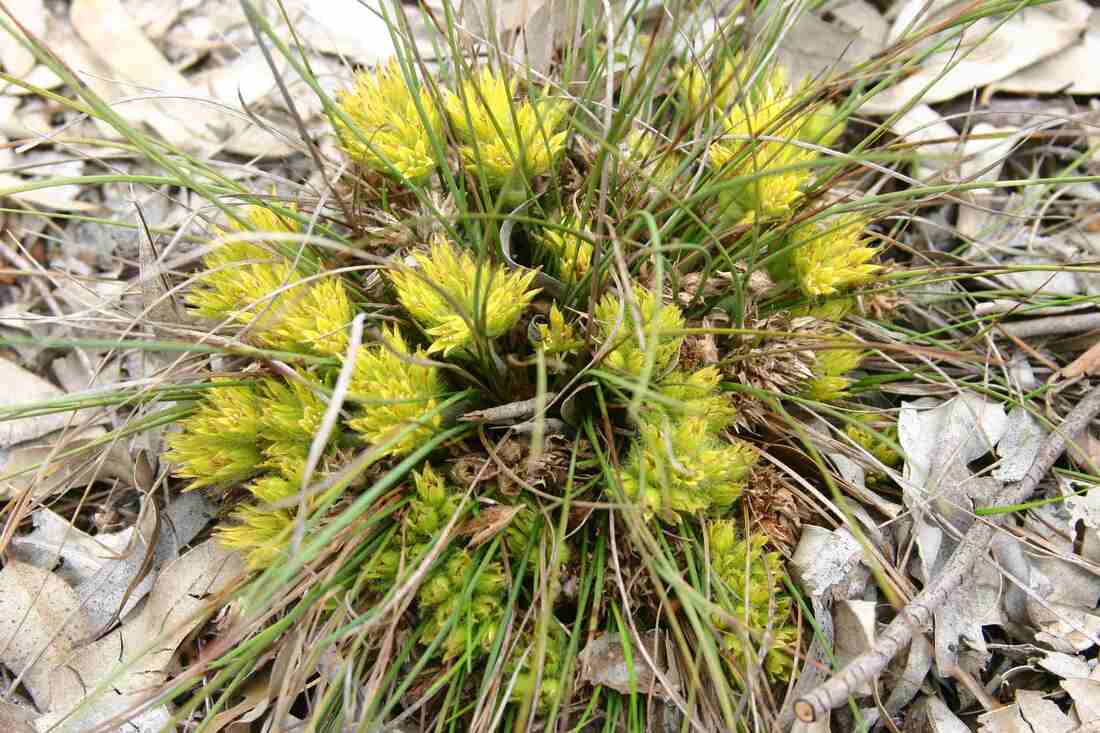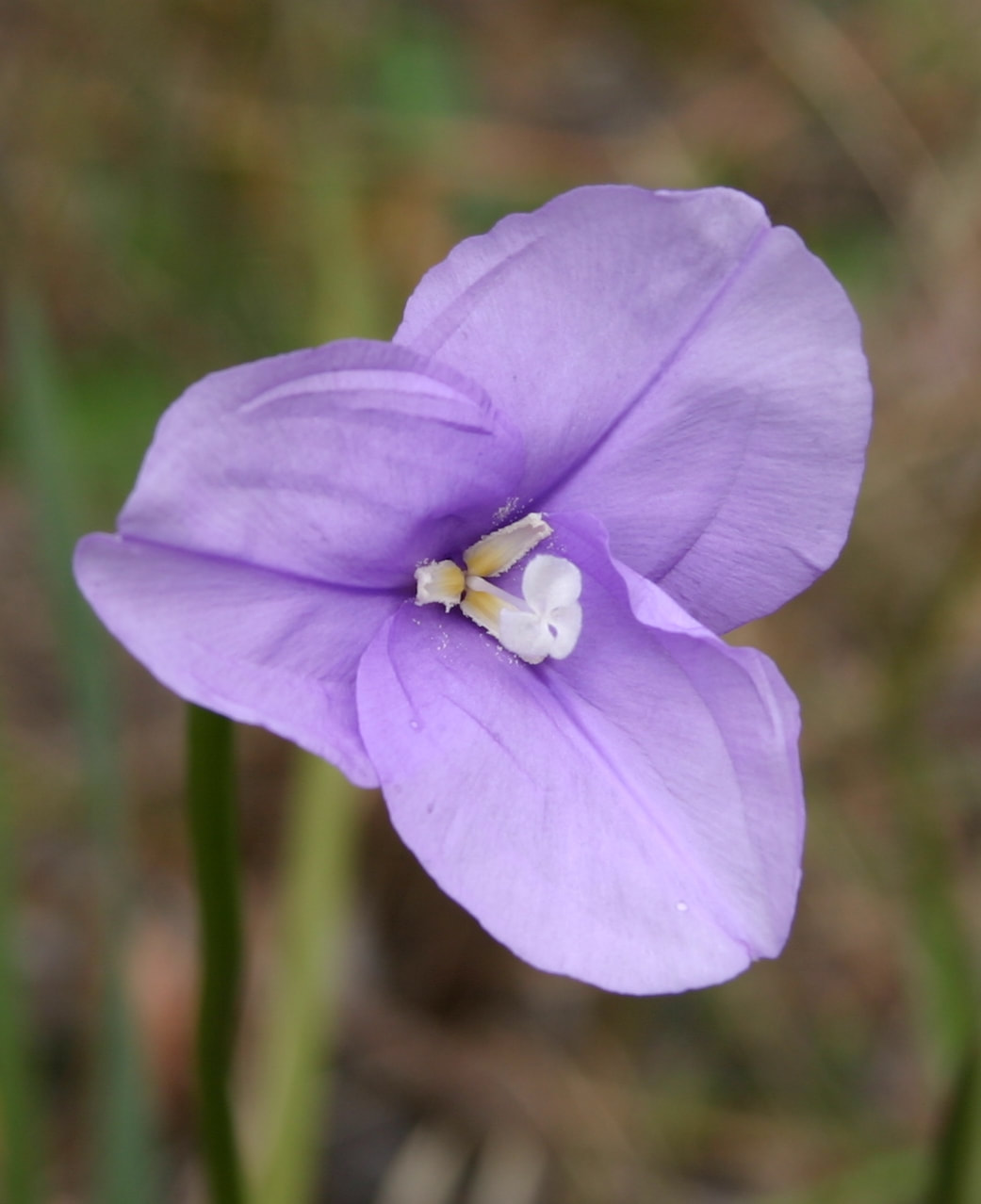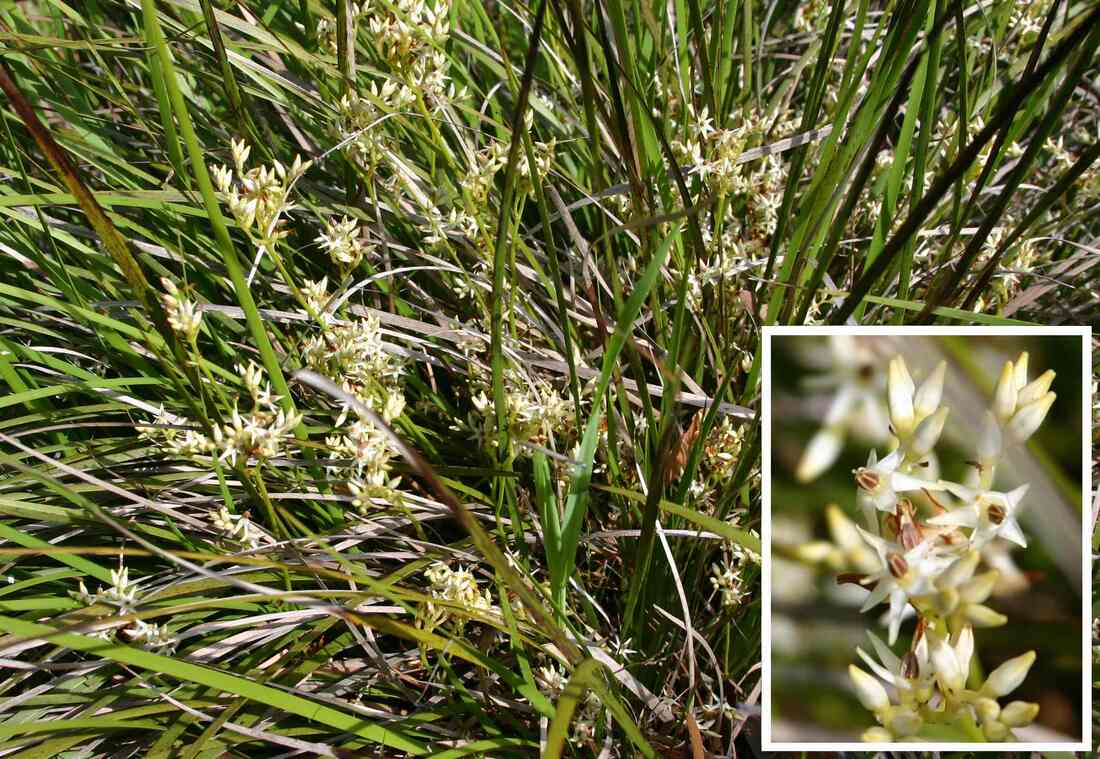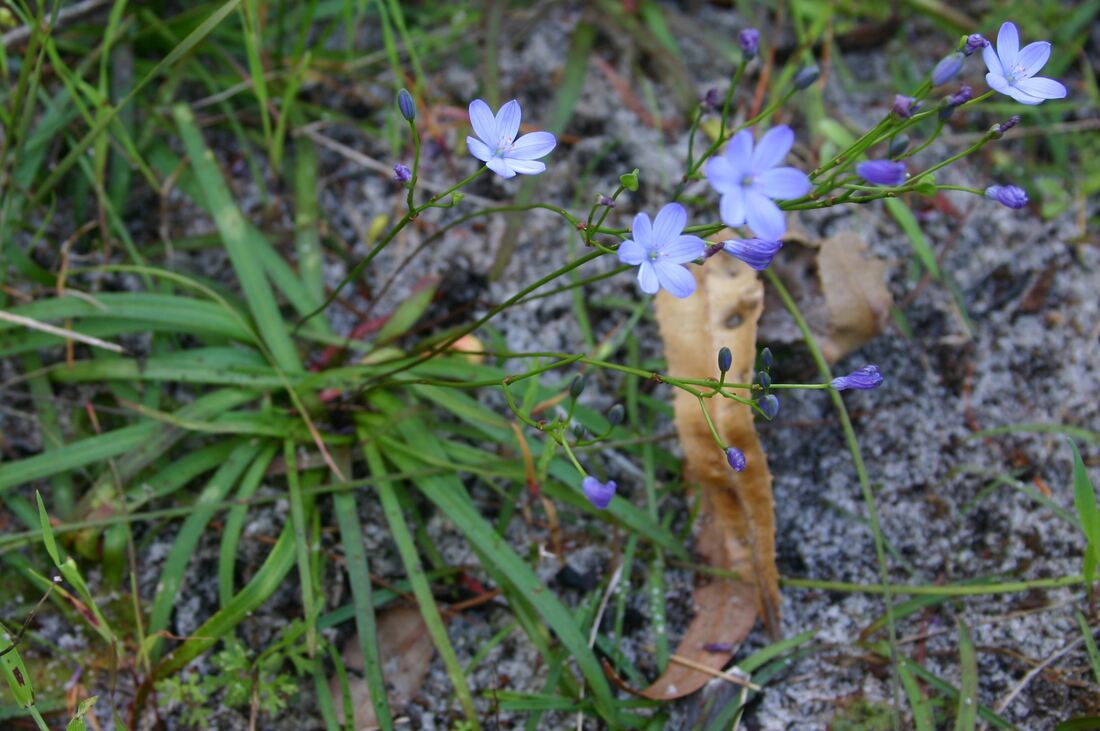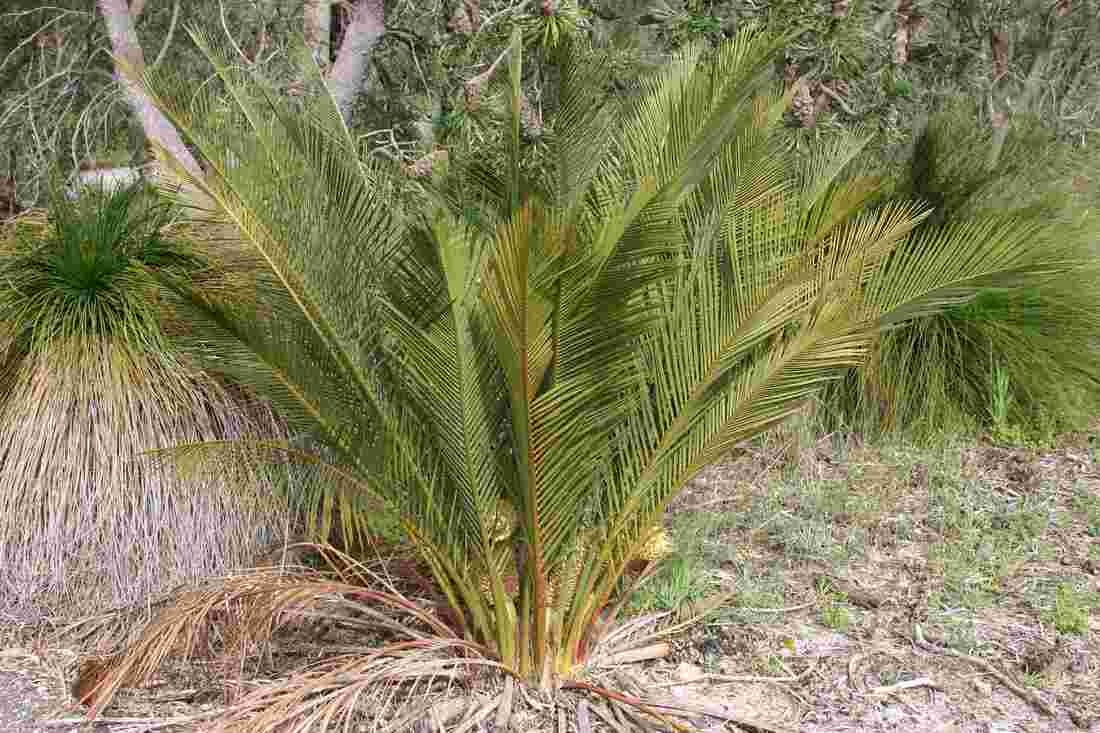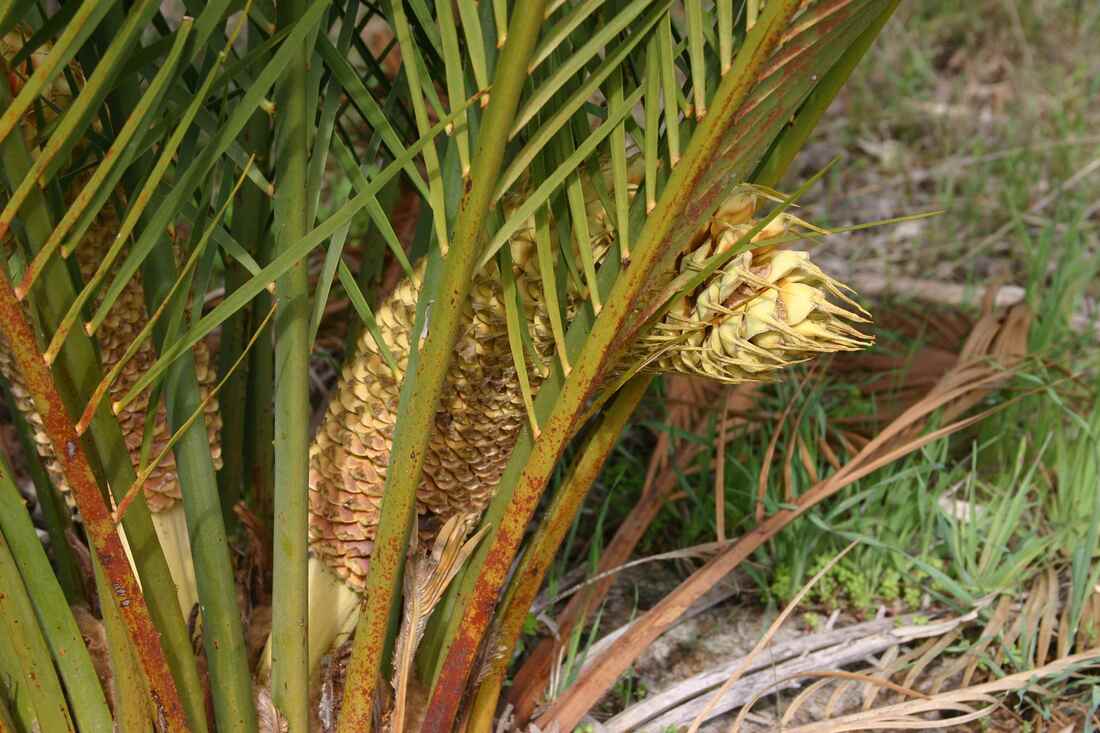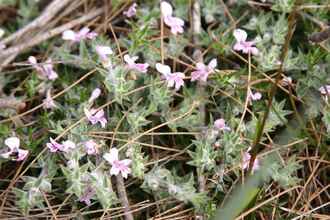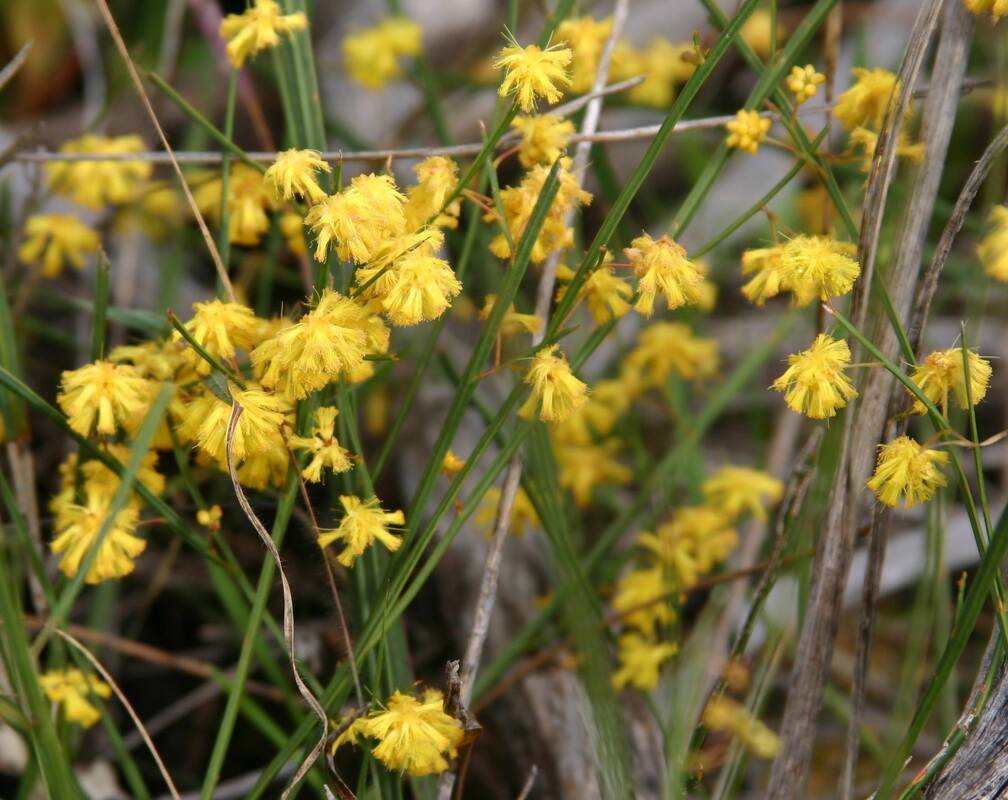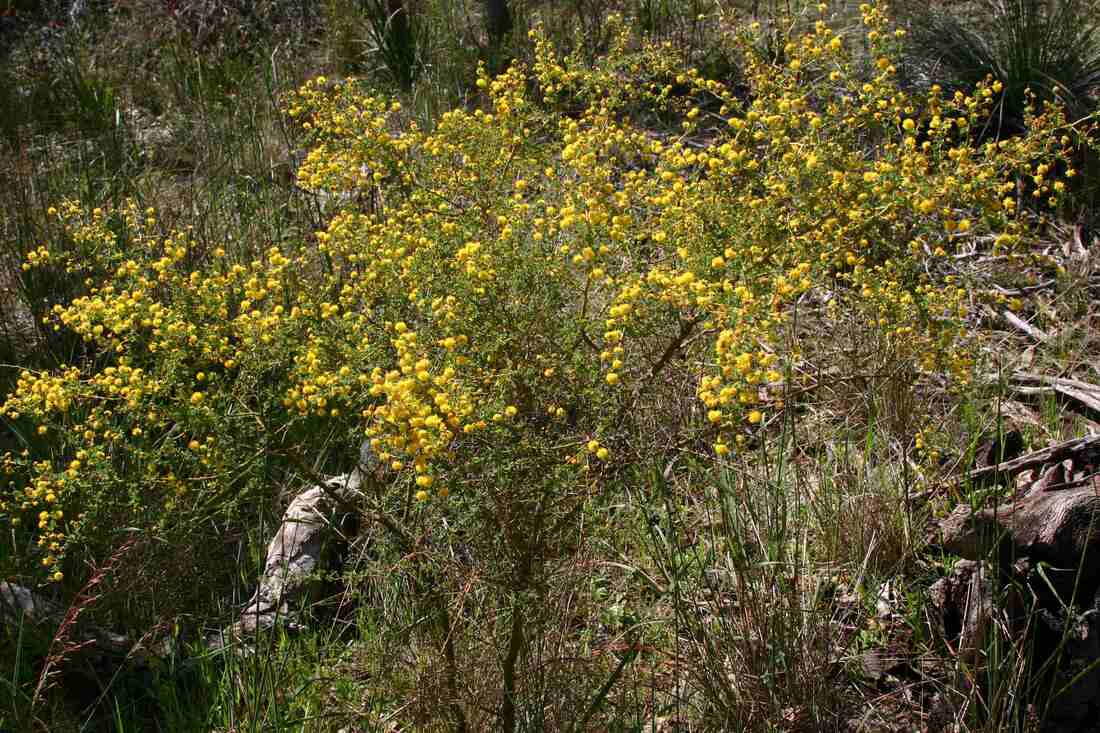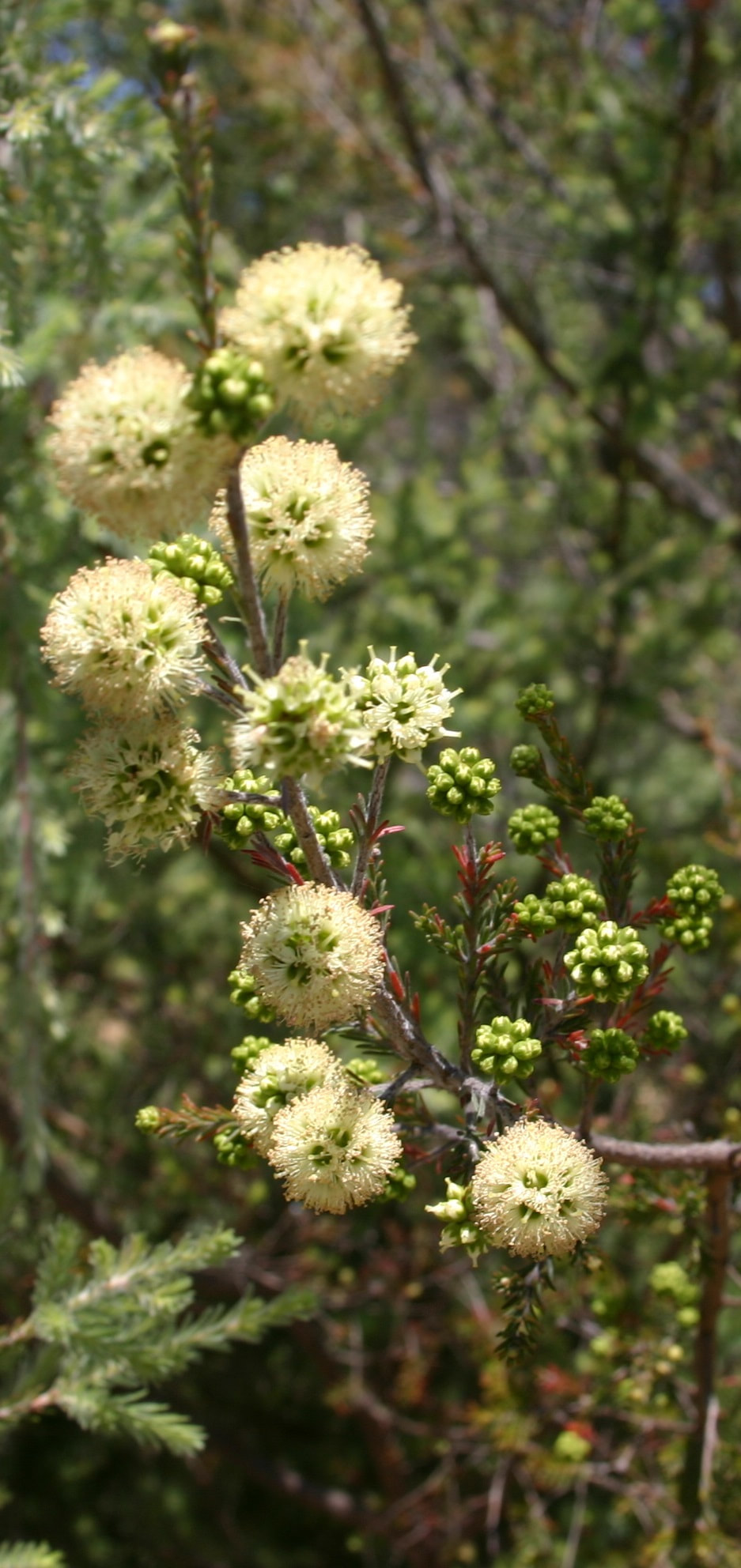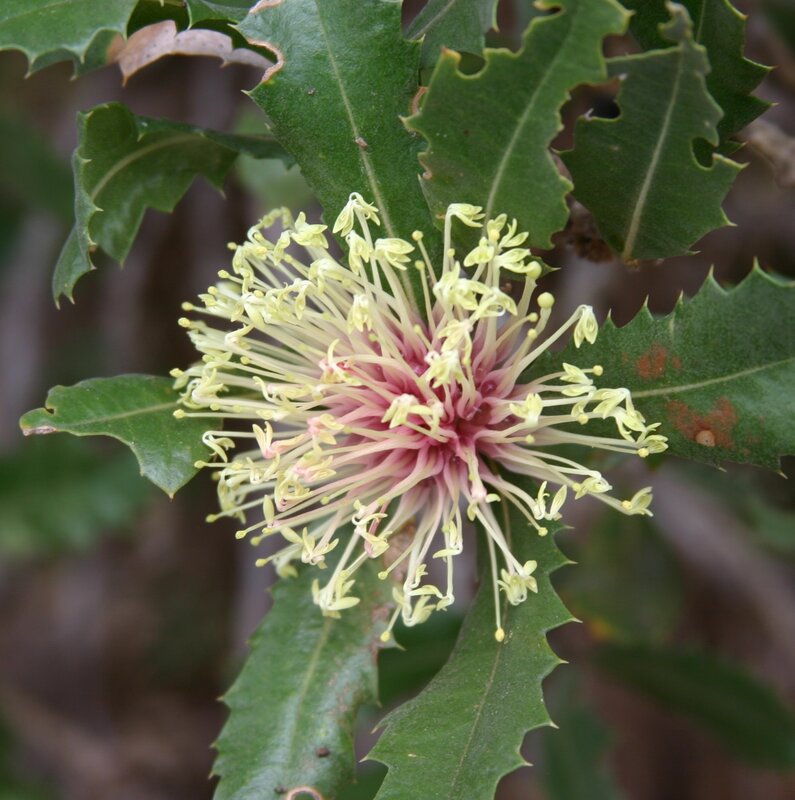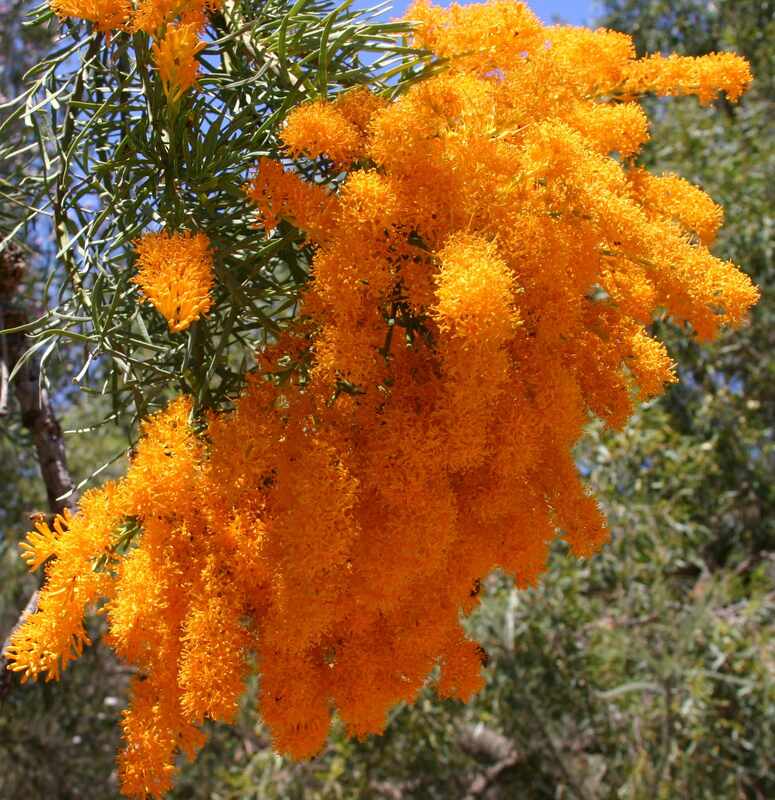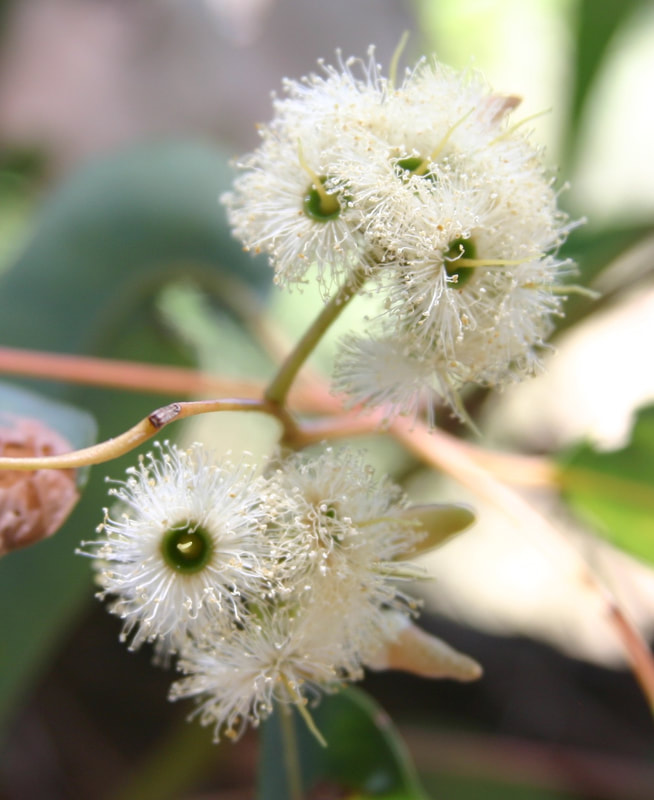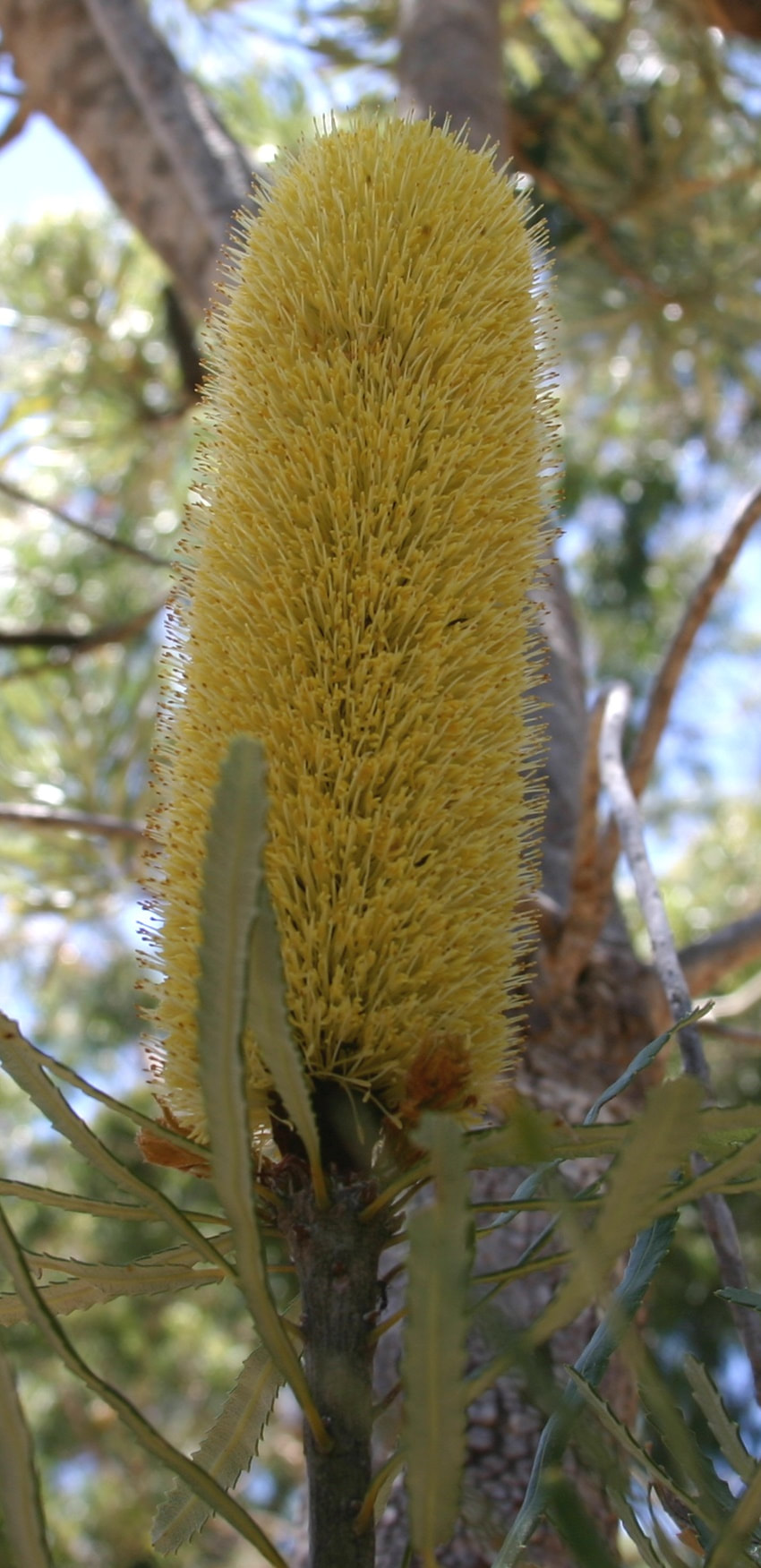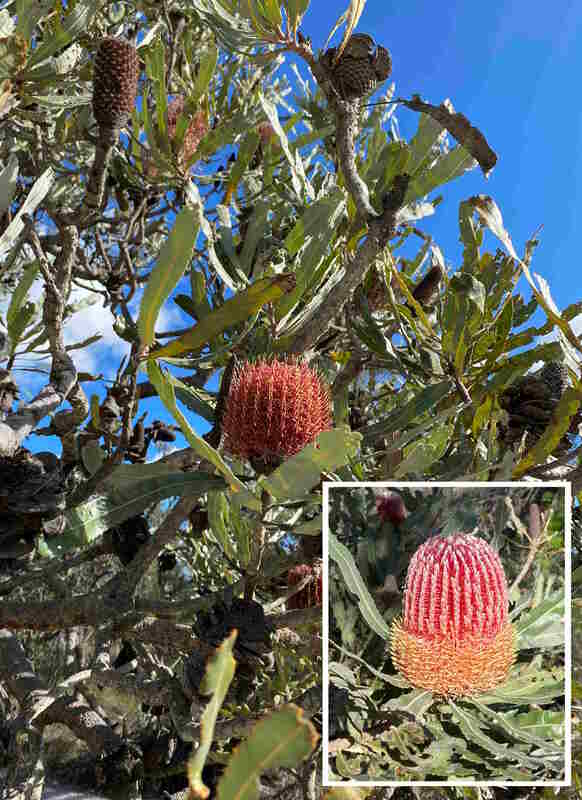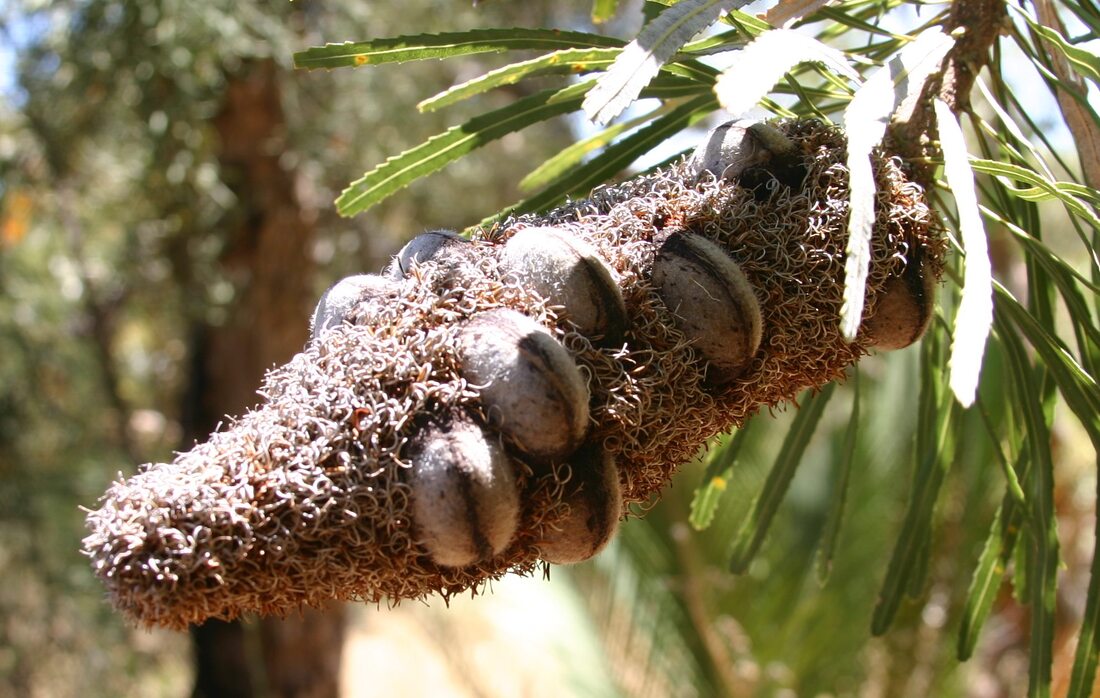SPRING WILDFLOWERS OF WANDI
We have photographed a small selection of local species native to the Wandi bush not all will be on your property or your neighbour’s property but they are here. We have done our best to identify the botanical name and the common name but please don’t hold us to this as we are not botanists and there are so many varieties within the same genus you would need to have special qualifications to do the perfect job. Enjoy the fantastic bush we have and see how many flowering plants on the list are on your property.
WANDI ORCHIDS & ANNUALS
|
Caladenia longicauda ssp. longicauda –
Common name Coastal White Spider Orchid, grows from a tuber, perennial flowering only lasts a week or so may not come up the following year but might the next, grows to about 200 – 350mm high in our sandy soils, flowers are white with red & brown. There are a large number of different varieties of this orchid spreading across the south west. |
Above: Caladenia Flava – subspecies flava
Common name Cowslip Orchid, tuberous, perennial, 150 -300mm high. Flowers are yellow-white having red colour variations on the petals. Below: This also a Caladenia - hybrid Caladenia x spectabilis (Caladenia flava x latifolia). This is rarely a seen Cowslip Orchid with different colouring, these variations make it difficult to identify the different plant species. |
|
Caladenia latifolia R.Br.
Pink Fairy Orchid tuberous, perennial, grows 200 - 450 mm high. Flower range from pink to white. |
Pheladenia deformis
Common name Blue Fairy Orchid also known as Blue Beard, tuberous, perennial, 200 - 450 mm high. Flower colour blue. |
Another Fairy Orchid in Wandi showing the variety of colours in nature.
|
|
Diuris corymbosa
Common name Donkey Orchid , tuberous, perennial, 300 - 400mm high. Flowers are yellow having brown colour variations on the petals. There is a huge variation in petal colour depending on the location around Perth. Above
Pterostylis vittata Common name: Banded Greenhood Flowering in August - September, has up to about twenty five flowers which are translucent green with darker green stripes. Stem can be up to 400mm tall. Above
Microtis atrata Common name Swamp Mignonette Orchid, very tiny flowers (inset) and is often found in huge numbers in wet areas following bushfires. It can be found on granite outcrops and also in swamps where it can be completely submerged. This sample was photographed in the garden bed outside the Pavilion at the Wandi Community Centre in a group of about 25 plants, it is also growing in my lawn at home. Above: Flower Top & Above plant base
Family Stylidium Common name Trigger Plant - this annual species has a clumping grass type appearance at ground level spreading around 70mm diameter by 50mm high, the photo above shows three smaller plants in frame, flower stalks rise up to 400 - 500mm with the top exploding with many pink trigger type flowers. Plant is hermaphrodite meaning self pollinating, if you tap the centre of the flower with a small stick the trigger will quickly strike, the trigger can be seen in the photo as a hook ready to pounce from behind the petals. Insects can trigger the plant to self pollinate, it will only do it once per flower. |
Aladenia discoidea
Common name Dancing spider orchid, antelope orchid or bee orchid. Flowers in August/September in Wandi, has a single hairy leaf around 18mm wide and 100mm long, stem is hairy and can grow up to 450mm long. Can be seen with multiple flower heads. Above
Pterostylis recurva Common name: Jug Orchid Interesting orchid doesn't appear as a flower, can grow up to 80cm tall on a single stem, difficult to spot. Flowers in August to September. Above
Pterostylis sanguinea Common name Dark Banded Greenhood, this plant is part of the orchid family and can be seen at times with just a stem of rosette placed leaves up the stem. Can have up to 10 - 12 reddish brown flowers 15 - 25mm long protruding from the flower stalk. Not orchids
Burchardia bairdiae Keighery Common name Milkmaids grows locally to about 0.4M on a single stem from a tuber, spring perennial, flower is white with multiple heads. Above:
Unidentified - this small dainty annual flowers in late spring early summer rising from a single stem having pink flowers with four petals, flower diameter is about 6mm, seems to grow clusters probably from seed fall. Craspedia variabilis
Annual plant: grows to a height of 100–400mm has one to five flower spikes surrounded by golden-yellow individual small flowers, each has a short stalk. |
|
Above:
Laxmannia grandiflora Common name Pincushions, small plant growing to about 150mm in a tuft, thin needle like leaves with multiple with flowers on the end of stem. |
Above:
Podolepis gracilis Common name Slender podolepis small daisy type flower pink and white colours grows to about 120mm high, seasonal perennial. |
KANGAROO PAW FAMILY
|
Anigozanthos manglesii D.Don
Common name Kangaroo Paw, grows from rhizome, perennial flower that is red and green, growing between 200 -1100 mm high, it is our Western Australia state floral emblem. There are many varieties of this plant that grow across WA and many hybrid versions produced by nurseries for the home garden. |
Anigozanthos humilis Lindl.
Common name Catspaw grows from a rhizome, flowers in spring, has a low growth habit in our sandy soil only to about 0.3M high. Flowers are a yellow-red-orange. |
SMALL SHRUB LIKE PLANTS
|
Hibbertia hypericoides
Common name Buttercup small bush upright and spreading growth habit, twiggy, grows 0.2-1M high locally; bright yellow flowers. |
Gastrolobium capitatum
Common name Pea Flower, multi coloured, mostly yellow, pink, red or orange, with some yellow, pink, red or orange spots, streaks or blotches, there is a large variety of plants in this family with quite different colouring. Has a shrub like appearance and can grow up to 1M tall with the same spread. |
|
Above:
Hovea flowers are purple with white a centre, flower colour can be blue to mauve, grows as a shrub between 1 - 1.5M high, leaves are thin and spikey with an open habit. Above:
Philotheca spicata Common name Pepper and salt, flowers have 5 petals, colour mainly pink, mauve or blue, an erect shrub with small narrow leaves. Above:
Synaphea acutiloba Common name: Granite synaphea, a small shrub in Wandi grows erect as a tuft growing to a height of 300 - 500mm. Flowers are yellow, leaves are spikey with new growth orange to red in colour. Above:
Allocasuarina humilis Common name: Dwarf Sheoak Open shrub to 2M high and has male and female plants. Above left: The female plant produces the fruit while Above right: the male plant produces the pollen, flowers are reddish brown, a hardy plant that will regenerate after fire. Above:
Scaevola Common name Fan Flower Grows in clumps around 500mm diameter and 300mm tall, has a light blue to dark blue fan shaped flower. This form has small green leaves and grows in a compact dome like shape. Is also seen on the coast in a ground cover form with larger thick glossy green leaves and is planted to stop erosion. |
Above:
Gompholobium tomentosum Labill. Common name Hairy Yellow Pea can grow to around 500mm high with the same spread, bush has an open appearance, leaves are round to oval in cross section covered in part with small hairs, after flowering round elongated hairy seed pods form. Above:
Stirlingia latifolia (R.Br.) Steud. Common name Blue Boy grows with an upright habit to around 800mm with long leathery leaves coming from slender branches growing from the lignotuber base, flowers, inset, are yellow, yellow/brown, red/brown. Foliage has a pungent smell when crushed. Above:
Jacksonia furcellata Common name : Grey stinkwood An open shrub growing to 4 metres tall with yellow and orange flowers. Wood stinks when it's cut leaves are sharp on the end can pierce the skin. |
|
Above:
Lysinema pentapetalum No common name, open straggly plant grows to about 600mm, white five petal flowers small leaves along slender branches. Not much information available about this plant. Above:
Calytrix flavescens Common name Summer Starflower, small bush that grows to about 1M diameter and 0.5M high, leaves are small with a round cross section, flowers are yellow and stunning, the bush is covered in flowers in early summer. Above:
Adenanthos sericeus Common name Woolly bush The local Wandi species has a difficult to see flower hidden on the ends and amongst the leaves of branches, leaves are grey green and hairy. This large bushy plant grows to around 4M in diameter with a height of 3M. Young plants have an upright habit but as they get older the branches tend to lie down and the plant becomes more spreading. Termites make short work of the dead and dying wood. |
Above:
Petrophile linearis Commonly known as Pixie Mops, a species of flowering plant in the family Proteaceae - Banskia. It is a small untidy shrub with narrow grey green leaves, flowers are unusual oval to spherical heads of hairy, greyish-pink or mauve to almost white flowers, the ends bursting open with orange yellow stamens. Above:
Eremaea pauciflora A scrappy bush with bright orange flowers in early summer, height around 1M can spread to around 1M in Wandi. Grows with an open habit having small green narrow thick leaves on woody stems. Above:
Conostephium pendulum Commonly known as Pearl flower, a small open plant, can grow to a height of 1M or less, our local plants grow to around 0.5M, leaves are long and narrow about 25mm length with a sharp point on the end. Flowers an be seen from June to September, they are cream coloured with a red-purple tip, about 11mm long, tubular in shape; style protrudes from the floral tube. The flowers hang individually from the leaf axils. |
CLIMBING PLANTS
|
Above:
Thysanotus manglesianus Kunth Common Name: Twining Fringed Lily - Leafless climbing plant entwines itself around other plants grows from a tuba, has purple fringed flowers, inset, can be in a clump but where there is something to attach to can grow to 500m high. |
CARNIVOROUS PLANTS
|
Above:
Drosera macrophylla Lindl. Commonly known as Sundew, grows flat to the ground from a tuber with a white flower atop a tall stem, likes wet shaded areas around trees or shrubs, dies off in summer heat. Has sticky clear globs on the leaves that trap insects, when they die it uses the nutrient as fertilizer. |
CLUMPING PLANTS
|
Above:
Unidentified - Perennial green stick like plant growing to about 400mm with the same spread, flowers are white and complex around 10mm diameter, a plant you would walk past unless flowering. Above:
Unidentified tufted grass Above:
Unidentified tufted grass |
Conostylis aculeata ssp cygnorum (left) and Conostylis setigera ssp setigera (above)
Common name Grey Cottonhead, Rhizomatous, growing in a grass like clump, leaves are ribbon like and have small fine needles along their edge, perennial, 0.05-0.4M high. Flowers are yellow. Above and left are the same species with quite different leaves and flowers. Above: Conostylis juncea
Common name Cone Flower Grows in a tuft from rhizomes, grass like height 100 – 400mm flowers appear below the leaves on short stems and are yellow or green/yellow in colour. Above:
Patersonia occidentalis Common name Purple Flag grows in clumps from rhizomes. Clumps start from a single rhizome and multiply out creating clumps from 300mm diameter to more than a metre in size. leaves are thin and ribbon like with flowers growing from long stems up to 500mm, when flowering finishes you are left with a elongated seed pod that dries. Above:
Unidentified tufted grass |
|
Above:
(Restionaceae) Common name Restiads Tufted grass Above:
Chamaescilla corymbosa Common name Blue stars grows from a tuber, 6 petal blue flowers, a perennial growing 50 - 100mm high, flowers on long stems. |
Above:
Hybanthus calycinus Common name Wild violet, grows with clumping leaves from the base which can be 150 to 300 mm long in our soil, flowers are a shades of purple 15 - 20mm long, very ornamental. |
|
Macrozamia riedlei
Commonly known as a zamia or Zamia Palm, this is a dinosaur plant, incredibly old and is part of the cycad family Zamiaceae. It is a trunk less plant having the fronds growing between 500 – 1500mm long above the ground in our Wandi soil. It produces giant cones protruding from the base amongst the palm fronds, red coating of the seeds is edible by birds and animals and if prepared correctly can be eaten by humans. |
GROUND COVERS
|
Below:
Hemiandra pungens R.Br. Common name Snakebush it is a prostrate ground cover and can spread over around 1M diameter ans around 100mm tall in our sandy soils. Flowers can vary considerably in colour from corolla white or cream, mauve, purple, lilac, violet, red or pink. Leaves can be hairy and spiky to the touch. |
ACACIA - THE WATTLE FAMILY OF PLANTS
|
Below:
Acacia incurva Grows with a low habit, multi-stemmed ribbon like stems and leaves, single yellow flowers. Yes this is a wattle. |
Above:
Acacia pulchella Commonly called Prickly Moses is a rangy shrub growing up to about 1.5M high, has yellow wattle type flowers with small fern type leaves and needle like spikes on the branches, Above:
Kunzea ericifolia Commonly known as Spearwood An erect woody evergreen multi trunked shrub having soft green linear leaves and spherical heads of usually yellow flowers. Grows between 2 and 6 metres can spread from the base and break laying on the ground has a short life and seeds readily. |
TREES
|
Above:
Banksia ilicifolia R.Br. Common name Holly Leaved Banksia Upright tree or shrub grows to about 6M in Wandi but can be as high as 10M, common name comes from the holly shaped leaves that are very spiky, part of the Proteaceae family closely related to banksia. Flowers appear yeloow then age to a red colour when maturing. |
Above:
Eucalyptus patens Commonly known as yarri or blackbutt Many of these trees in Wandi have been effected by fire and are now multi trunked forms. It has rough bark on the trunk and branches that can make it a problem to handle, fine needle like extensions pierce the skin easily. Leaves are lance-shaped, flower capsules have a distinctive cap that pops off to reveal creamy-white flowers later forming into spherical to oval fruit . Tree grows to 3-25 M high. |
|
Above:
Nuytsia floribunda Commonly known as the Western Australian Christmas Tree Grows as a tree or shrub, to 10M high, establishes itself by being parasitic attaching itself to another plants root and uses the plants nutrients to establish itself. Flowers are a vivid orange yellow and attract numerous bees and ants. Bark is rough, grey-brown and its wood is pithy and useless for making anything. If a tree is in a horse paddock it will be eaten to the ground. |
Above:
Eucalyptus marginate Common name Jarrah This tree can grows to 40M high however many of the fully grown trees in Wandi were logged for timber in the early settlement years and later poor quality trees we cut for firewood, adding to their woes broad acre clearing was carried out in our area and the trees along with vegetation were pushed into piles and burnt. Bark is rough and fibrous, flowers have a pointy protective cap that falls off revealing white-cream/pink stamens, more or less spherical fruit form from the spent flowers, leaves are broad with a distinct midvein. Its hard, dense timber is insect resistant although the tree is susceptible to dieback. The timber has been utilized for cabinet-making, flooring and railway sleepers. |
|
Above: Banksia menziesii
Common name: Firewood Banksia Common tree growing on most of the properties in Wandi reaching around 5M but can grow on suitable ground to around 7M. Leaves are dull green with an serrated edge. The inset image is of a flower half in bloom with stamens radiating out from the centre, opening up at the base. These stamens will dry and fall away leaving a woody centre section that developes seed pods. Seed pods look like a birds beak when open allowing the seed to fall to the ground. Seeds germinate well especially to smoke water or a cool fire. |
Above: top the flower below the hairy fruit.
Banksia attenuata
Common name Slender Banksia
Tree form grows 2-4M high in Wandi, leaves are slender with a saw tooth shaped edge. Flowers are a bright green to yellow candle shape 20-30 mm long that later turn into a dry looking hairy fruit. Seed pods form along the central axis and when ready open to drop the seed, fire quickens the process.
Banksia attenuata
Common name Slender Banksia
Tree form grows 2-4M high in Wandi, leaves are slender with a saw tooth shaped edge. Flowers are a bright green to yellow candle shape 20-30 mm long that later turn into a dry looking hairy fruit. Seed pods form along the central axis and when ready open to drop the seed, fire quickens the process.
